Chris McCandless journey
Chris mccandless, or alex supertramp adventure, until the wild..
- Epigraphs and Allusions
- Plot Structure
- Narrator/Author
- Four Questions
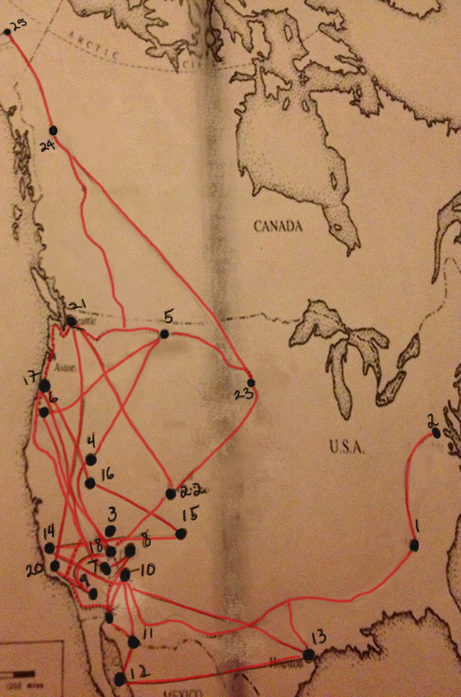

The Map: McCandless's Journey

Chris McCandless- Into the Wild Travel Map
by kmuscatello20
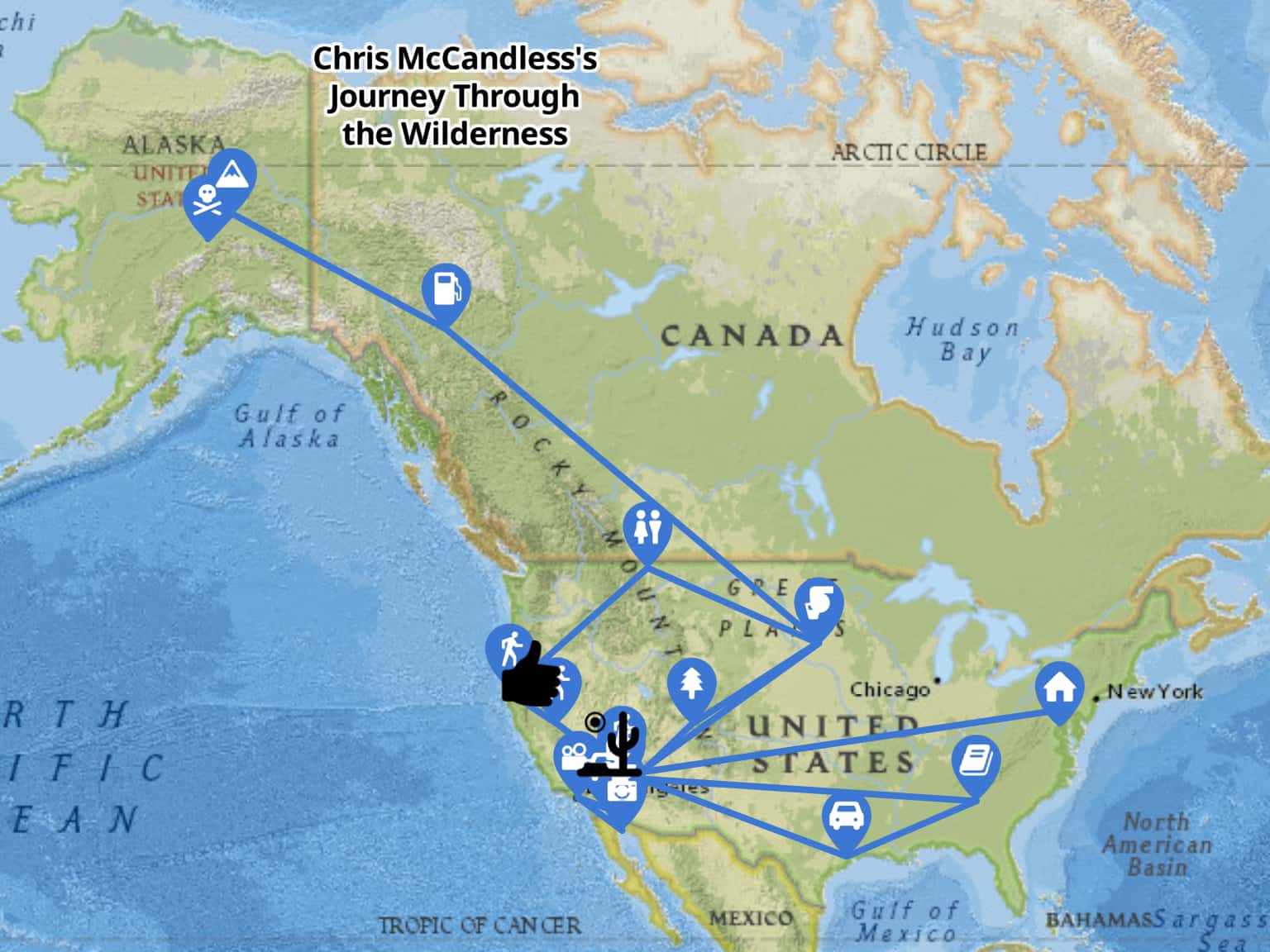

Into The Wild 142 Bus
The Magic Bus
The Bus from the story has many names – The Magic Bus, The Stampede Trail Bus, the 142 Bus, Fairbanks Bus etc etc. What rings true with this bus is that it is very special. It has been made special by the story, the many visitors that go there, its remoteness and the feeling it gives those affected by this story. Unfortunately, some people have perished getting to the bus and so I feel it necessary to provide those wishing to visit the bus, some information.
*Note* The Fairbanks City 142 Magic bus has been moved.
Bus 142 was removed from the Alaska wilderness in the summer of 2020 and later deposited at the University of Alaska Museum of the North for long-term curation and exhibition.
University of Alaska, Fairbanks Campus 1962 Yukon Drive Fairbanks, AK 99775
Restoring the Magic Bus to its early 90s condition, prior to it suffering further damage from vandalism, is a time-consuming endeavor. The restoration work is currently underway in the Engineering Building’s high-bay area, which features full glass walls and is open to the public for free from 8 am to 8 pm, Monday through Friday.

To get there, you can either take a shuttle bus from the museum or enjoy a 15-minute walk. For additional information, visitors can reach out to the museum at (907) 474-7505. The final exhibit will be constructed in a protected and suitable outdoor location, with discussions ongoing about an accompanying indoor exhibit.

Once finished, the public will have free access to the exhibit(s) during regular museum hours.
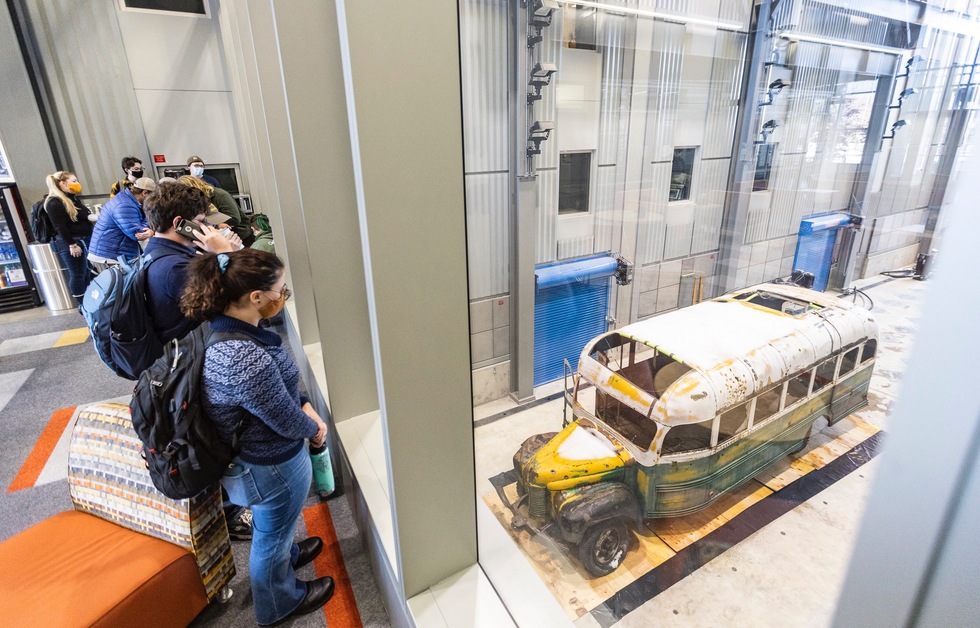
https://www.uaf.edu/museum/collections/ethno/projects/bus_142/
Information from the University of Alaska about the 142 bus:
Thanks to a collaboration between the UAF’s Institute of Northern Engineering (INE) and the Arctic Infrastructure Development Center (AIDC), the general public can now visit the bus from 8:00 am to 8:00 pm, Monday to Friday, at the ConocoPhillips Alaska High Bay Structural Testing Lab located in the Joseph E. Usibelli Engineering Learning and Innovation Building (JUB) on the UAF campus. This opportunity is available until mid-September 2023.
This museum project will involve a multi-year effort to preserve the aging bus, which has endured years of vandalism. Additionally, teams will work on developing an interpretive approach that highlights different phases in the bus’s life. These phases include its role in the Fairbanks City Transit System during the 1950s, serving as a residence for a Yutan Construction Company mining road crew member in the early 1960s, providing shelter for hunters and back-country hikers during the 1970s and ’80s, and gaining fame as the final refuge of Christopher McCandless in 1992, a story made famous by Jon Krakauer’s 1996 book, “Into the Wild.”
The bus will be displayed in an outdoor area near the museum on the UAF campus, allowing visitors to safely explore its history for the first time in three decades.
Virtual bus: https://www.uaf.edu/museum/exhibits/virtual-exhibits/bus142/ Bus Supporter website: http://www.friendsofbus142.com/
Information about the 142 Fairbanks City bus original location.
Please note that we cannot be held responsible for your actions – if you decided to visit the bus, seek the appropriate advice from experts and speak to local authorities in Fairbanks.
Erik Halfacre has posted many valuable tips on the forum about the bus. He is an Alaskan himself and I feel his knowledge of the bus, its location and surroundings are very valuable. And so, here is some great information and useful tips from Erik… (there is also a great Youtube video he made at the end of the article.)
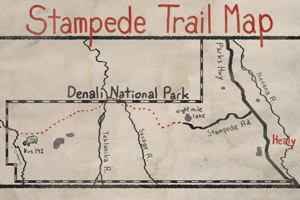
Hiking The Stampede Trail – Erik Halfacre 19th August 2010
The Stampede Trail to Bus 142 is becoming a more popular hiking destination these days. Virtually unheard of, to anyone outside the state of Alaska before Krakauer’s article in Outside Magazine, the trail has seen a vast increase in traffic since the release of Sean Penn’s film in 2007.
The story of Christopher McCandless , restless and footloose, stirs within many of us a hunger for adventure that is hard to quiet. I can’t begin to recall how many times I’ve heard, “Oh Man! I read that book! I really want to get out to that bus someday!” or “That movie was really great. I really want to see the bus.” The desire to see the bus, is often equated (in the minds of many Alaskans) to some kind of worship of Chris, or a celebration of naiveté. I feel this is an unfair characterization. For me, the desire to see the bus was rooted in my will to better understand his story.
Some things cannot be adequately described in words. The bus is one of those things. You will not truly understand the conditions of Chris‘ experience until you sit down in the folding chair where there once was a driver’s seat and just absorb the feeling of silence and isolation. The feeling is both refreshing, and lonely. Even with seven other people in my group, I couldn’t help but feel a little lonely in that place.
When I first began planning for my own trek, in 2009, I tried to find information online. I think, partially due to local sentiment about the story, and partially due to the fact that at that time there really weren’t a heck of a lot of people headed out that way, It was darn near impossible to find any good information about the hike. All I found back then, was the Denali Chamber of Commerce page telling me how incredibly dangerous it is, and basically that they didn’t want to give out advice because they’d rather you didn’t go. That wasn’t enough to deter me though. I dug around until I found some coordinates for the bus and looked over the satellite imagery. I researched how to properly execute a crossing of a swift flowing river, and then practiced on some rivers of similar depth and speed nearer to my hometown of Palmer, Alaska.
After my hike I did more research on the subject, interviewed and emailed many others who had made the trek themselves, and turned my research into a ten minute video about doing the hike. Response to the video was encouraging, and it became obvious that there was a demand for this kind of information, so I turned the video into a whole website.
So, enough about Me, lets get to the good stuff; What you need to know to hike the Stampede Trail to Bus 142.
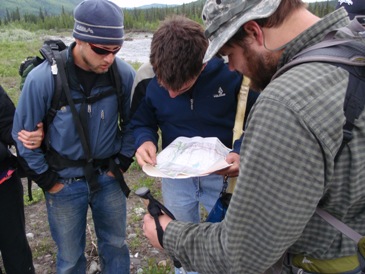
Overview The Stampede Trail is long, wet, and buggy. On the upside, the terrain is mostly level. There aren’t really any long uphill sections worth noting. You’ll face two river crossings, a night or two in bear country, and swarms of mosquitoes that will try to pick you up and carry you away. Frequently you’ll find yourself wondering ‘is this the Stampede Trail, or Stampede River,‘ as you wade through flooded muddy trail up your knees.
How Do I Know if The Stampede Trail is Too Hard For Me? The Stampede Trail is not for everyone. This is not a hike for beginners. No two ways about it. Despite how badly you may want to see the bus, if you are not a reasonably proficient hiker (someone with experience hiking 15+ miles a day for multiple days with a pack) then you are probably getting yourself in over your head. By putting yourself in that situation, you are pretty much ensuring that you will exert yourself beyond your safe limits. This leads to exhaustion. Exhaustion leads to lack of judgment. Lack of Judgement can lead to serious injury or death.
The good news is: if you are not much of a hiker right now… it doesn’t take much to build that kind of endurance up. Ramp up. Each weekend go on a hike that’s five miles longer than the last weekend’s hike. If you start with a five mile hike today, and follow that plan, you’ll be up to forty miles within two months assuming you already have some reasonable level of fitness. Hike with a pack. Even on day hikes, throw some soup cans in a bag and hit the trail. The more fit you are, the more you are likely to have the endurance to get yourself out of sticky situations.
How Far Is It? It’s about twenty miles there and twenty miles back (forty miles roundtrip.)
How Long Will it Take Me? For people of reasonable fitness, I recommend dedicating three days for the hike. The best plan seems to be as follows
Day 1: Be to the trailhead (eight-mile lake on the Stampede Road) about noon. Hike into the Teklanika River, about ten miles, and set camp.
Day 2: Wake up good and early, about 5am, and cross the Teklanika. (We’ll talk more about this later.) Hike out to the bus and back, about twenty miles, in one day. Camp at the Teklanika again, this time on the side closest the bus.
Day 3: Wake up early again and cross the Teklanika. Hike out to your car. Drive to Lynx Pizza in Denali and get some food that doesn’t require you to add boiling water. They also have a beer.
This schedule can be adjusted. If you want to spend a little more time out there or spend a night at the bus site, just turn Day 2 into two ten-mile days instead of one twenty-mile day. Unless you are a truly stellar backpacker though, I wouldn’t recommend trying to make the trip any shorter than three days. For one, it makes it much more difficult to time your river crossings. When I was out there though, we did see a pair of Germans who were running the whole trail in one day. Those guys were machines though.
What Should I Bring? Not surprisingly, the kit you should bring is not unlike the one you should pack for most other Alaskan backcountry trips. Pack: Having a comfortable pack is crucial for a hike of this length. I’m partial to Gregory brand packs, but many other brands make great packs. Just don’t try to save money by buying the thirty-dollar Wal-Mart special for this trip. Your shoulders will regret it.
Tent: For the summer, a good sturdy three-season tent is plenty. Make sure your rain fly is functional. The weather can turn cruddy in the blink of an eye up there. Bring some extra para-cord for making anchors (by tying it around sticks and wedging them between river rocks) as otherwise it may be difficult to stake out along the river.
Sleeping Bag: A twenty-degree bag should be adequate for the summer months. Consider upgrading to a zero-degree bag if you are going in the early season (May) or late season (September.) Temps frequently drop into the forties at night, even during July. Make every effort to keep your bag completely dry (especially if you use a down bag.) Put your sleeping bag in a dry sack inside your pack.
Water: There’s water everywhere you turn around on this trail. You’re constantly crossing streams. You don’t need to bring much with you. A single one-liter bottle will be enough if you filter/purify water as you go. This dramatically reduces the weight of your pack.
Food: Packing dehydrated food (Mountain House, Backpacker’s Pantry, etc) will keep the weight of your pack down. Another just add water meal, that’s much cheaper, are the Knorr (formerly Lipton Brand) pasta side meals. They are available at Fred Meyer Grocers (in Anchorage, Palmer, Wasilla, and Fairbanks.) So no matter where you fly into, you’ll be able to find them. Bring plenty of snack-type stuff. It’s important to keep your energy up. Beef jerky, trail mix, raisins, craisins, powerbars, etc all make great food you can keep in a pocket.
Other Stuff (but by no means everything): flashlight – Alaska may be the land of the midnight sun but you’ll still want a light knife para-cord – for stringing a bear bag bear-proof container – an alternative to stringing a bear bag toilet paper small plastic trowel tons of socks a few feet of duct tape fire starter camp stove and cookware a map a compass a camera
What Should I Do About Bears on the Stampede Trail in Alaska? The absolute BEST thing you can do about bears (and just a good idea in general) is to travel in a group. Bears just don’t attack big groups of people. According to Stephen Herrero’s book, Bear Attacks: Their Causes and Avoidance, bears will rarely attack a group of three or more. A group of six or more has never been attacked.
Some evidence supports the use of bear bells. The human voice is generally accepted to be a much more effective bear deterrent though, so singing, or talking loudly is advisable.
Don’t cook in your camp. Don’t eat in your camp. Don’t bring your food (or trash) into camp. If you are having a campfire, burn what you can, bag what you can’t, and put it into your bear bag, or your bear-proof container.
String a bear bag ten to fifteen feet off the ground and at least six feet out from the trunk of the tree. Leaning trees work best.
As far as personal protection, I personally carry a gun. I realize many people have objections to firearms, don’t like the inconvenience of traveling with them, or just don’t own them. Only bring a gun if you are well-practiced with it. There’s nothing worse than an injured bear out there. Even if you get away, an injured bear is much more likely to attack someone else in the future.
Consider bear spray. The potent pepper spray is effective at deterring a bear attack, non-lethal, and you need not be as much of a marksman. You can’t fly with it, but it’s available here in Alaska, at lots of retailers.
How Should I Cross the Rivers near the Stampede Trail? You will encounter two rivers that you will need to cross on the Stampede Trail. The first is the Savage River. The second, and much more serious, is the Teklanika.
The Teklanika River is the river that stopped McCandless from returning to the highway. Its depth can vary greatly depending on factors such as rain, temperature (the hotter it is, the more the glaciers are melting, the deeper it will be,) and time of day. It can be anywhere from knee-deep to chest-deep, and the current is quite strong.
Less than a week before the writing of this article, a Swiss woman drowned while trying to cross the Teklanika. It’s deadly serious. If it looks really bad and you are nervous about the crossing, just turn around. There’s no sense losing your life over a hike. There’s nothing in that bus worth dying over. Don’t end up in the paper!
The best time of day to cross the river is very early in the morning. As mentioned previously, the river is glacial, and therefore the level drops during the course of the night due to the lower temperature.
Before crossing, take the insoles out of your boots, and take your socks off. Keep your boots on though. It will help increase your grip and stability on the rock. Taking your pants off is an option you should consider as well. Keeping your pants on will give you only a marginal amount of protection from the cold of the water, but it will increase the surface area that the river has to push against you. Taking your pants off reduces your drag. Undo the buckle on your pack (and sternum strap.) That way, if you fall in and need to free yourself of your pack you will be able to.
It is far better to cross the river in a group than it is to cross alone. In a group, line up with the larger members furthest upstream. Have everyone pick up a long pole and hold it, parallel to the river, across their chests. This way, if someone starts to stumble, the entire rest of the group supports them, and the largest members are upstream breaking the current. Walk slowly, and carefully place each foot.
If you must cross alone, use a long sturdy pole to help you balance. Place the pole upstream from yourself and lean against it. Face upstream, but move in a diagonal line downstream as you move across. Always maintain two points of contact at all times. Again, take your time and be careful.
The use of a rope may help in some instances. The rope she was using, was the big contributing factor in the Swiss woman’s death, however. In that instance, the rope had been incorrectly placed parallel across the river. Also, she had tied herself to the rope with another shorter length of rope. When she fell, the river pushed hard against her, stretched the rope, and she was pinned underwater, held in place by the rope, which was now in a V shape pointing downstream. She was unable to free herself.
To avoid this, if you use a rope, have it at a steep angle across the river. The stretchier the rope (for example, climbing rope) the steeper that angle needs to be. Having an angle will allow a person to use the rope to get back to shore if they fall, and will keep the rope from forming a V. It is also a poor, and potentially lethal, idea to tie yourself to the rope. Simply use it as a handrail.
If you are swept downstream, do not panic, keep your face up, and your feet pointed downstream. Work your way to the bank as quickly as possible.
It is also worth noting that the Teklanika braids out as you head further south along it’s bank from the trail (upstream). You may want to head in that direction in search of a safer place to cross.
Another method of crossing you could investigate, would be the use of a pack raft. There are places in Alaska that rent them and it could be a much safer alternative to fording. I have no personal experience with that method so I am not able to comment much further on it.
How Bad Are The Bugs? The bugs are terrible. The mosquitoes will swarm you. Bring plenty of bug repellent.
What About Footwear? How Can I Keep My Feet Dry? With the number of stream crossings on this trail, it would be nearly impossible to keep your feet dry the whole time. In my group of eight, no one was successful in that goal, though a few tried pretty hard.
The best thing to do is just accept the fact that your feet will be wet all day. Take care of your feet though. Each night make sure to dry your feet thoroughly. Bringing a pair of thick wool socks for each night is a great idea as well. Only put them on right before you get into your sleeping bag. This will keep your feet warm and dry for at least eight out of every twenty-four hours, and because it’s one of the main places your body loses heat while you sleep, it effectively increases the temperature rating of your sleeping bag as well.
I also suggest bringing along a pair of cheap, light, foam flip-flops. That way you can wear them around camp while your boots sit next to the fire drying.
Any Other Advice? Be super careful. Nobody wants to hear about anybody else getting hurt out there. Be Prepared, do your homework, use good judgment, and come home alive.
Trail Reports and Photos I’m always looking for current trail reports and photos, so feel free to get ahold of me when you get back. I’d love to chat.
Stampede Trail Flickr Group http://www.flickr.com/groups/stampedetrail/
Leave a Reply Cancel reply
You must be logged in to post a comment.
- Australia edition
- International edition
- Europe edition
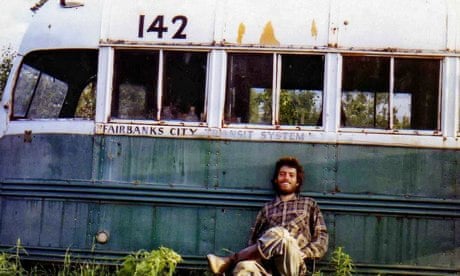
In Alaska's wilds, the mystic hiker's bus draws pilgrims to danger and death
T he old bus in which Chris McCandless died in 1992 in the interior of Alaska – made famous in Jon Krakauer's book Into the Wild and later in the Sean Penn film of the same name – long ago lost its windows to souvenir hunters.
A plaque inside the bus, installed by his family, commemorates his life. A recent visitor describes the site as a pigsty.
The same reasons that cost McCandless his life, trapped without enough food on the wrong side of a Teklanika river in full spate from summer meltwater, makes it a dangerous place to approach.
Last year a dozen "pilgrims", as residents of the nearby town of Healy disparagingly label the hundreds who have been drawn to the bus each year since Penn's film was first screened in 2007, needed to be rescued by park authorities , local people and state troopers. So far one visitor to Bus 142 has died, a 29-year-old Swiss woman, Claire Ackerman, who drowned in the river. Others have had close escapes.
All of which has fuelled a simmering debate – how best to deal with the morbid magnetic pull exerted by the fascination with McCandless.
The McCandless story is well known: how the 24-year-old hiker, born in California, raised in Virginia, abandoned his safe suburban upbringing, donating $24,000 in savings to charity and styling himself Alexander Supertramp, and set off on a two-year hitchhiking journey that ended with his death in the bus.
Interest is unlikely to wane any time soon. A book by his sister, Carine, is due to be published this autumn, while a mockup of the Fairbanks City Transit bus, built for Penn's film, is a tourist attraction in its own right in Healy, bought by a local brewery. On one side are those who believe the bus should be removed , on the other a costly proposal to build a footbridge across the river at a place where it narrows.
If evidence were needed of both the appeal of the story and the place where McCandless died in his sleeping bag, to be found later by moose hunters, there is ample evidence online. There are blogs dedicated to his story and pictures posted of "pilgrims" seated in the same pose in which McCandless photographed himself outside the bus.
"There's a pretty steady trickle all summer," says Jon Nierenberg, who owns the EarthSong lodge off the Stampede Road, which most visitors use to get to the bus.
"There are different types, but for the most passionate – the ones we locals call pilgrims – it is a quasi-religious thing. They idealise McCandless. Some of the stuff they write in the journals [at the bus] is hair-raising."
A very few, Nierenberg suspects, have gone a step further by camping next to the bus and depriving themselves of food.
"We had one tall skinny guy who had been out there for a week or two who staggered, swaying on his feet, into our coffee shop. We helped him out, then sent him on his way."
Diana Saverin secured a writing grant to study the phenomenon of the pilgrims which she described in a long article for Outside magazine in December after becoming fascinated by McCandless's story during her first visit to the area in 2011. In The Chris McCandless Obsession Problem she recalls : "We soon felt the story's pull. I was 20, Jonathan [her travelling companion] was 22, and McCandless's uninhibited adventures spoke to both of us."
An encounter with the French boyfriend of Ackerman, who had returned a year after her drowning, marked the beginning of her interest in those who were drawn to the bus. The issue was dramatically underlined when, as she walked along the trail herself, she encountered three "pilgrims" who had been trapped by the river for a day and a half and who had sent for help.
Krakauer's book, Saverin believes, has accrued a growing cultural significance as one of those cult books on to which readers project their own preoccupations. In that sense it has garnered a status like The Catcher in the Rye or On The Road .
Its closest equivalent, however, is Henry David Thoreau' s Walden – the transcendentalist and natural philosopher's chronicle of his own experiment in self-sufficiency between 1845 and 1847 in a one-room cabin in Massachusetts, a replica of which is now also a popular tourist site. The comparison is unsurprising, since Thoreau, as Krakauer notes in Into the Wild , was a writer who fascinated McCandless, along with Leo Tolstoy and Jack London.
But what of the "pilgrims" that Saverin met and their motivation? "The people I encountered would always talk about freedom" she said. "I would ask, what does that mean? I had a sense that it represented a catch-all. It represented an idea of what people might want to do or be. I met one man, a consultant, who had just had a baby and who wanted to change his life to be a carpenter – but couldn't, so took a week to visit the bus. People see McCandless as someone who just went and 'did it'."
She finds it ironic that what the "pilgrims" hanker after – McCandless's perceived idealised rejection of the modern world to forge his own path – has become a well-worn trail. And unlike Thoreau, Saverin also points out, McCandless did not construct his own philosophy – the "insights" that readers find being channelled by Krakauer.
One of the fiercest critics of the McCandless myth – and all that it represents – is Craig Medred, who writes for the online Alaska Dispatch, most recently in September in an article headlined The beatification of Chris McCandless .
"Thanks to the magic of words," writes Medred, "the poacher Chris McCandless was transformed in his afterlife into some sort of poor, admirable romantic soul lost in the wilds of Alaska , and now appears on the verge of becoming some sort of beloved vampire.
"Given the way things are going, the dead McCandless is sure to live on longer than the live McCandless, who starved to death in Interior Alaska because he wasn't quite successful enough as a poacher."
And Medred's conclusion takes a swipe at his disciples. "More than 20 years later, it is richly ironic to think of some self-involved urban Americans, people more detached from nature than any society of humans in history, worshipping the noble, suicidal narcissist, the bum, thief and poacher Chris McCandless."
Kris Fister, a spokeswoman for the Denali National Park nearby, whose rangers have been called in to help "pilgrims' who become trapped on the wrong side of the river, frames the same question regarding those who get into trouble in more moderate terms.
"The water gets high in the river – the same issue that Chris McCandless had to deal with. People don't have enough food. The question I would ask is: you read the book or saw the film. What is your disconnect? There are places you can cross if you go downstream. But often these are people who do not feel comfortable navigating. Often people don't have the experience or the equipment. The summer before last there was one gentleman we had to help on two occasions."
For some, at least, the pilgrimage to the 142 bus, far from providing an epiphany, has been the source of disillusionment. Among these is Chris Ingram, who wrote an essay on his own experience for the Christopher McCandless website. Arriving a few days after Ackerman's drowning, he had planned, he recounts, to hike the trail to the bus "to have my own survival experience in Wild Alaska and to pay my respects to a person I adored and admired".
Reaching the raging river where rangers were still finishing their investigation into Ackerman's death, Ingram decided to turn back, his view of Bus 142 as the "mecca of McCandless followers" radically transformed.
"Perhaps," he wrote of his own experience, "we are over-enchanted by the zeal of his story, over-sympathetic, feeling a sense that we can relate, or perhaps a Hollywood movie has mesmerised, idealised and over-romanticised our thoughts and beliefs beyond our own lives that we fantasise away from them.
"I had an ample amount of time along the trail to contemplate Chris's story, as well as my own life. The wilderness is a poor place to put your worries, your concerns, your dreams, your hopes, thoughts, wishes and happinesses. The wild simply is just that, wild. Unchanging, unforgiving, it knows nor cares not for your own life. It exists on its own, unaffected by the dreams or cares of man. It kills the unprepared and unaware."
As for the fate of the bus itself, Fister's own view is that, with the vehicle rotting, nature will eventually reclaim it.
- The Observer
Comments (…)
Most viewed.

- Water Sports
The Inspirational Journey Of Christopher McCandless

In April 1992, Christopher McCandless set out on a journey across North America, traveling first to the West Coast and then into the Alaskan bush . He journeyed by foot, hitchhiking and canoe, and his journey took him to some of the most remote and beautiful places in the world. McCandless began his journey in California, making his way north through the state before crossing into Oregon. He then headed east, through Idaho and Montana, before finally reaching his destination of Alaska. Along the way, McCandless stopped at a number of different places, including national parks, forests and wilderness areas. He also spent time in small towns and cities, getting to know the people he met along the way. McCandless’ journey came to an end in August 1992, when he died of starvation in an isolated area of Alaska. However, his journey continues to inspire people all over the world who are looking to find their own adventure.
After weeks of traveling the American Southwest, Christopher McCandless impulsively buys a secondhand aluminum canoe and begins paddling down the Colorado River . The lower Colorado River Valley is home to some of the hottest and starkest land on the planet. The person, with no identification, sneaks into Mexico through the open gates of the Morelos Dam, but is soon lost in a maze of irrigation canals. McCandless is saved by duck hunters who speak English after three days of paddling and portaging. They tow him to El Golfo de Santa Clara, a fishing village in the Gulf of California. When he arrives at this point, a violent storm has swept his small canoe out to sea.
What Places Did Chris Mccandless Travel To?

Chris McCandless ‘ journey took him to a number of significant and important places, but the most significant was Bus 142, Anza-Borrego, Fairbaks, Alaska, Carthage South Dakota, Bullhead City, Arizona, Denali National Park, the Slabs, De
Chris McCandless spent two months walking across the vast and rugged West . Chris, on the other hand, came up with an elegant solution to his dilemma by simply removing the map from his computer. Chris walked 15 miles up an old road known as the Stampede Trail, finding an abandoned bus along the way. Chris was able to connect with the natural beauty of the area and get a firsthand look at what it’s like to live in the West while visiting.
Did Christopher Mccandless Kayak The Grand Canyon?

There is no record of Christopher McCandless kayaking the Grand Canyon , and it is not known if he ever attempted to do so. However, given his love of adventure and the fact that he was an experienced outdoorsman, it is certainly possible that he attempted to kayak the Grand Canyon at some point in his life. If he did, it would have been an epic journey and an incredible feat.
Why Does Mccandless Go To Los Angeles?

In the novel, Into the Wild, by Jon Krakauer, Chris McCandless goes to Los Angeles for a number of reasons. First, he is looking for a way to get to Alaska, and Los Angeles is a major transportation hub. Second, he is hoping to find a job in Los Angeles so that he can save up money for his journey. Finally, he is curious about the city and its people, and he wants to see what it is like.
McCandless v. City of Los Angeles [CA CIVIL ASO]. The Second Appellate District, Division 2. On November 27, 1935 [date], this article was published. This is an appeal from a judgment entered in favor of the plaintiff in a real estate case for damages. During the construction process, an obstruction in the parkway leading to plaintiff’s property was created. Private property is protected as a right under article I of the Constitution of 1879, according to Section 14 of that section. It is illegal to damage private property for public use without compensation.
In Reardon v. San Francisco, 66 Cal. I am writing from a report published on July 6, p. 317, and 56 A. This provision, which was inserted in Rep. 109 [Act] to ensure a right to compensation, had the term ‘damaged’ attached to it. According to the appeals court, the City of Los Angeles “has a right to construct the tunnel in question for public use within the meaning of the provisions of the Constitution above stated.” As a result of this instruction, the plaintiff’s property was damaged, according to the defendant. There is absolutely no merit in this claim. The attorney general also criticizes the court for giving some instructions. According to Section 360 to 367, article XXVIII of the Charter of Los Angeles (Stats.
1925, p. 1137), no payment from the city’s funds shall be made unless the demand for payment is duly audited (sec. 360). Audit is generally understood to mean that the controller has given or secured sufficient evidence to support a claim. The city of Los Angeles does not consistently adhere to its provision that requires notice of potential litigation before a suit may be filed against the city. According to Robertson v. Robertson, the defendant claimed that it was the city council, not the courts, that should have filed the claim. In Rogers v. Rogers and Musto-Keenan Co. v. City of Los Angeles, the city claimed the claim was filed with its police surgeon. On June 17, 1935, the Supreme Court granted Douglass v. City of Los Angeles a hearing, and the final decision was delivered on December 31, 1935. As late as the second trial, the defendant formally stipulated that plaintiff’s claim was due and filed with the city council via the city clerk, and that the claim was rejected.
Trip Christopher Mccandless
In April 1992, Christopher McCandless, a recent college graduate, hitchhiked to Alaska and walked alone into the wilderness north of Mt. McKinley. Four months later, his decomposed body was found by a moose hunter . How McCandless died remains a mystery.
McCandless’ story is full of adventure, self-sufficiency, and ultimately tragedy. McCandless was an explorer who would do anything in his power to find new knowledge. He survived alone for months in the Alaskan wilderness on his own. He died of starvation in the wilderness, so his story is tragic.
Mccandless Journey Timeline
In April 1992, McCandless hitchhiked from South Dakota to California, then headed back east. In early September, he began hitchhiking north from Lake Mead, Nevada, in the direction of Fairbanks, Alaska. On September 6, he crossed into Canada, and ten days later he arrived in Clearwater, British Columbia. McCandless continued hitchhiking north along the Stikine River into the Yukon Territory . On September 22, he entered the Wrangell-St. Elias National Park and Preserve in Alaska. McCandless’s journey came to an end on the banks of the Sushana River, where he died of starvation on August 1992.
The story of Chris McCandless’ journey in the timeline A young man decides to embark on a journey across the country after leaving his home. Chris’ story was greatly enhanced by hitchhiking, which prevented him from meeting the people he met. The Slabs were not used for Chris’ personal gain during his epic journey. It is critical to understand because it is in this scene that he begins to talk about his upcoming trip to Alaska. After spending time in Bullhead City, he got to return to the Slabs to taste freedom. Chris’ journey was coming to an end here. The significance of this scene is that it was an opportunity for him to connect with those he met along his journey in one of the final loose ends.
It shows how simple it was for someone to fall in love with Alex right away after having a brief conversation with him. Chris is on a hike and is thinking a lot about a variety of difficult questions. He believes he was reborn in the Alaskan bush and is ready to return to civilization. This is a severe fault of potato seed. Because the knees are so prone to bending, standing is a difficult task. The danger of doing so (189). Chris rests at this point in his journey, at the conclusion of his journey.
- Mobile Apps
- Stream on discovery+
- Program Guide
- Ghost Adventures
- Ghost Hunters
- Ghost Brothers
- Conjuring Kesha
- The Dead Files
- Destination Fear
- Eli Roth Presents: A Ghost Ruined My Life
- Expedition Bigfoot
- Ghost Nation
- The Holzer Files
- Kindred Spirits
- Mountain Monsters
- Paranormal Caught on Camera
- Portals to Hell
- Amy Bruni and Adam Berry
- Destination Fear Team
- Don Wildman
- Ghost Adventures Crew
- The Holzer Files Team
- Jack Osbourne and Katrina Weidman
- Steve Dischiavi
- Watch Live TV
- Tips for Solo Travelers
- 4 Gorgeous Waterfalls
- 5 Extreme Swings
- World's 10 Best Swimming Holes
- Best BBQ in America
- Tilt! at 360 Chicago
Digital Exclusives
- Big City, Little Budget: New York
- Big City, Little Budget: San Francisco
- Bizarre Foods in the Kitchen
- One Bag and You're Out
From Our Shows
- Bizarre Foods
- Bizarre Foods: Delicious Destinations
- Booze Traveler
- Expedition Unknown
- Hotel Impossible
Mysteries at the Museum
Top domestic.
- New Orleans
- New York City
- Washington, DC
Top International
- Myrtle Beach
- Niagara Falls
- San Antonio
Explore By Region
- Asia Pacific
- Middle East & Africa
- North America
- South & Central America
Top Interests
- Amusement Parks
- Arts and Culture
- Food and Wine
- National Parks
- Health and Wellness
- Long Weekends
- Outdoor Adventure
By Traveler
- Family Travel
- Girls' Getaways
- LGBT Travel
- Solo Travel
Travel Tips
- Budget Tips
- Gear and Gadgets
- Hotels and Lodging
- Plan Your Bucket List
- Savvy Traveler
- Travel's Best
Off the Map
The chris mccandless story, what's new from trvl.
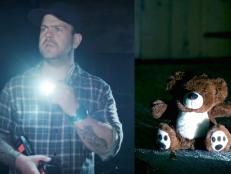
Jack Osbourne's Most Shocking Adventures 9 Photos
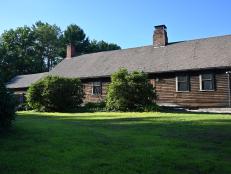
The Spirits in the Conjuring House Were Quick to Show Themselves Apr 7, 2023
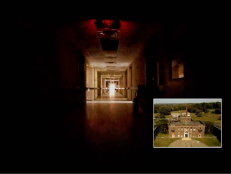
Haunted History: A Shuttered Pennsylvania Nursing Home Is Home to Dozens of Trapped Souls Mar 30, 2023
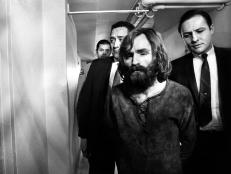
Cult Leader Charles Manson Controlled People from Behind Bars Mar 24, 2023
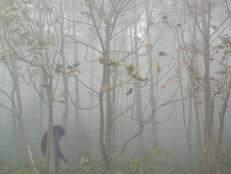
7 Best Pieces of Evidence Recovered By the Expedition Bigfoot Team Mar 14, 2023
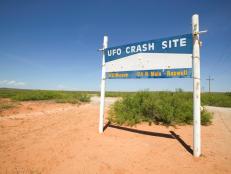
6 Things Witnesses Said About the Roswell Incident Mar 10, 2023
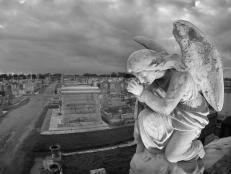
Creepy Urban Legends From Each State Nov 16, 2022
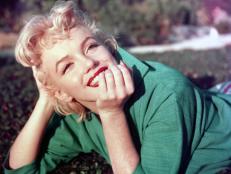
Unraveling The Mysterious Death of Marilyn Monroe Feb 24, 2023

Top 5 States For UFO Sightings Feb 8, 2023
Creepy urban legends from each state 50 photos.

A Massachusetts Family Fled Their Home After Chilling Door-Camera Footage Nov 22, 2022
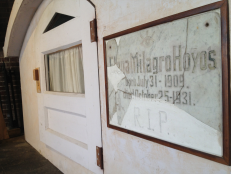
6 Museums That Are Home To Creepy And Mysterious Artifacts Oct 31, 2022
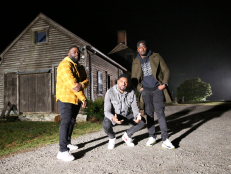
Settle In For A Boo Binge With The New Season Of 'Ghost Brothers: Lights Out' Oct 11, 2022
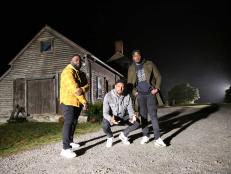
Ghost Brothers: Lights Out Returns for Season 2 on discovery+! Sep 22, 2022
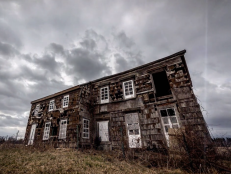
Fact Or Fiction? Modern Vampire Lore May Be A Planned Misinformation Campaign Aug 22, 2022
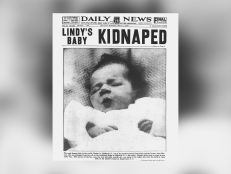
Lindbergh Baby Kidnapping: Was The Famous Pilot Responsible For His Missing Son? Aug 22, 2022
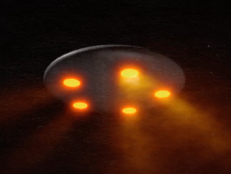
Top 6 States With The Most Alien Encounters Aug 22, 2022
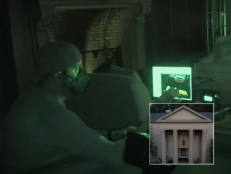
5 Unforgettable Spirits From Ghost Adventures Season 25 Sep 14, 2022

5 Craziest Moments From Fright Club Season 2 Sep 1, 2022

Four Terrifying Moments From 'Ghosts Of Devil's Perch' Aug 31, 2022
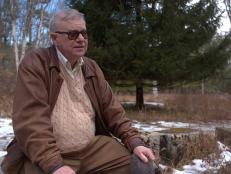
Shock Docs: The Visitors Reveals the Horrors of Alien Abduction from Best-Selling Author Whitley Strieber in Terrifying New Doc Sep 3, 2022
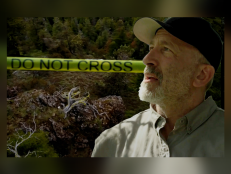
7 Of Russell Acord’s Most Heart-Pounding Moments On 'Expedition Bigfoot' Aug 12, 2022
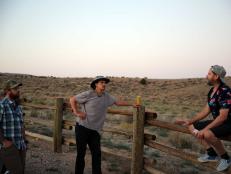
Jack Osbourne Teams up with Jason Mewes and Jamie Kennedy in the New discovery+ Special, Jack Osbourne's Night of Terror: UFOs Aug 2, 2022
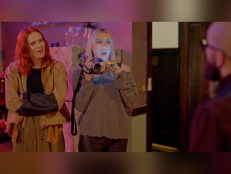
Who Are The Odd Fellows? Jul 29, 2022
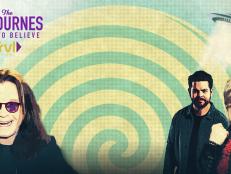
Boy Records Selfie With Grandma’s Ghost Jul 27, 2022
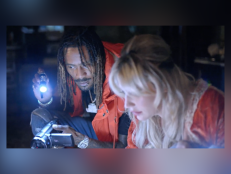
The Haunted History of San Francisco’s Westerfeld House Jul 19, 2022
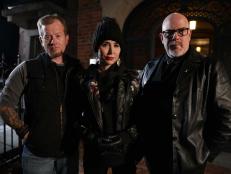
An Elite Team of Paranormal Investigators Race to Help a Petrified Western Town in the New Series Ghosts of Devil's Perch Jul 19, 2022
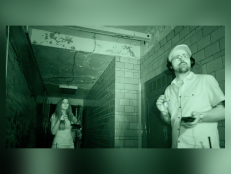
13 Terrifying Pieces of Evidence from Ghost Hunters: TAPS Returns Jul 14, 2022
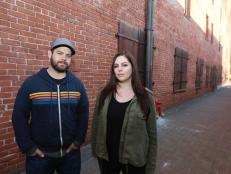
National Dive Bar Day: Is There a Portal To Hell In Memphis? Jul 7, 2022

7 Scary Homes From 'Ghost Adventures: House Calls' Season 1 Jun 30, 2022

Stream discovery+
Your favorite shows, personalities and exclusive originals. All in one place.
Follow Us Everywhere
Join the party! Don't miss Travel Channel in your favorite social media feeds.
More From Travel
- Sweepstakes
- Stream Travel Channel
- Ways to Watch Travel Channel

- Privacy Policy
- Visitor Agreement
- Online Closed Captioning
- Accessibility
- Discovery, Inc.
- Do Not Sell or Share My Personal Information
- Food Network
- Travel Channel
- Cooking Channel
- Discovery.com
- © 2024 Warner Bros. Discovery, Inc. or its subsidiaries and affiliates. All rights reserved.

Log in with user name:
Log in with social media:
Get FREE email communications from Fodor's Travel, covering must-see travel destinations, expert trip planning advice, and travel inspiration to fuel your passion.
- Travel Tips
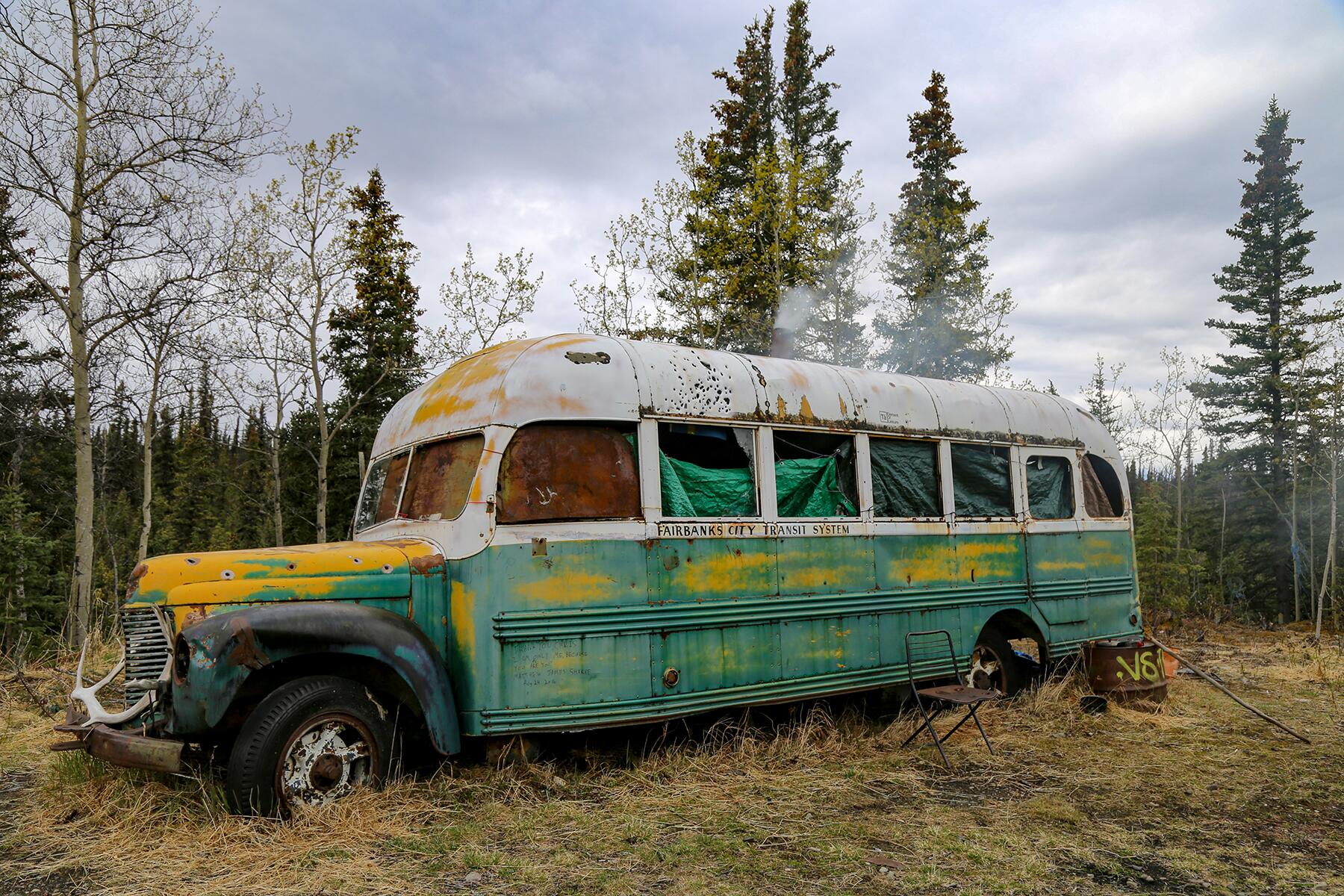

You Can Visit the ‘Into the Wild’ Bus. But Should You?

Almost 30 years after Chris McCandless’ passing, I toured the movie prop bus featured in the film, Into the Wild, and learned how he might have felt within his last few days.
It was at a brewery with our tour guide that I heard the bus where Chris McCandless—the ill-fated American nomad and subject of Jon Krakauer’s nonfiction book Into the Wild —was available to visit in Healy, Alaska .
I had read Into the Wild in college when I was first starting to consider the type of life I was looking to adopt once I escaped the walls of academia. I was hungering for adventure, and there was something that drew me specifically to McCandless, who had eschewed technology, society, and modernity.
It’s been 20 years since McCandless perished, but his story buried itself in my brain and remained there persistently as I experienced my own wild peregrinations. I might have forgotten the details of how he died, where his family was from, or how old he was when he passed, but the note of caution remained as a reminder to respect the natural world. And of course, I remembered the bus.
The real bus, the one where McCandless spent the last months of his life, was taken to the Museum of the North , where it would be made into a curated object for visitors. The bus that’s available for visiting in Healy is actually the prop from the film, Into the Wild . Most visitors seemed unaware that this convincing movie prop was not the actual bus, and with beers in hand, nearby bar patrons were snapping selfies and posting on social media.
Top Picks for You

Recommended Fodor’s Video
As my husband and I grabbed a drink at the 49th State Brewery —a brewpub serving local fare and brews outside Denali National Park—we peered at the prop bus sitting in the parking lot in the ever-drizzling Alaskan rain. I peered over to gauge what visitors’ reactions were, which proved invariably mixed. Some bounded up the stairs to voyeuristically examine the props meant to match those of the real “Magic Bus” (Chris’s name for his home base), while others eyed it cautiously, as though his fate might rub off on them. It has for some.
While you would actively have to choose to suffer Chris’s fate by walking into the wild near Healy in order to view the bus, two admirers have died while making the trip while others have suffered from frostbite and near-drowning. Angela Linn , the senior collections manager at the Museum of the North, sees the bus as a memorial as well as a note of caution. “Lots of people disappear in Alaska every year,” says Linn. “Many people die while out connecting [with the outdoors] and doing what they love.”
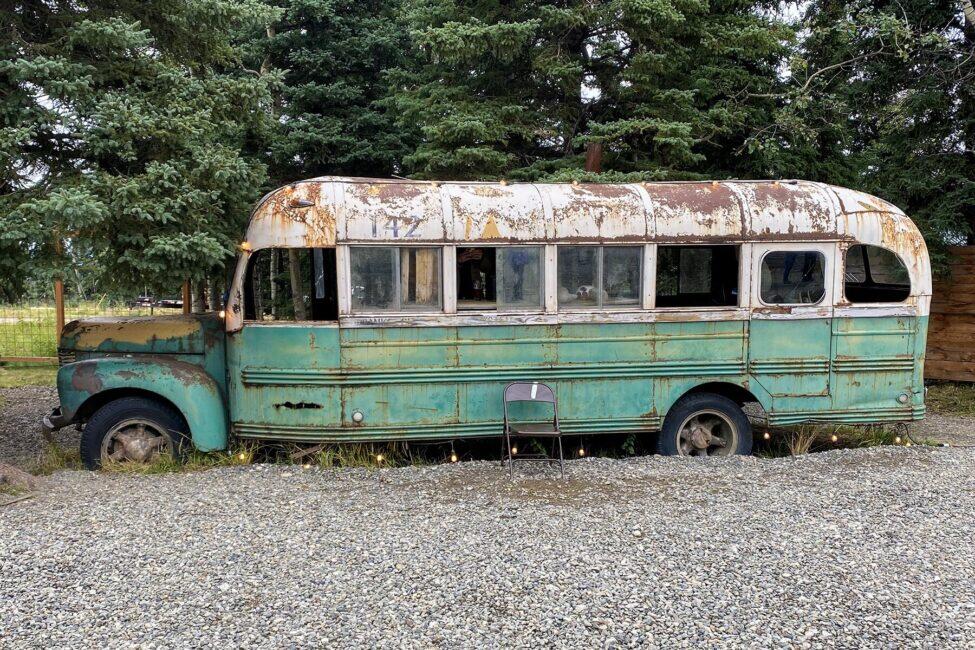
Others, it seems, saw the bus as a trophy for their Instagram feeds. As I sat there sipping my beer, I couldn’t help but wonder what Chris would make of all of the increased tourism to a wild place like Denali after a global pandemic. What would he think about how he had inadvertently played a small-but-deadly part in that tourism? Chris was a known Luddite, equating the trappings of technology as proof that we humans are disconnected from a greater purpose. What would he think of today’s smartphones in our back pockets?
When his parents offered to purchase a new car for him as a graduation gift from college, Chris vehemently declined. He was happy with his aged and yellow Datsun, already starting to become a relic from another time in the ’90s. It seemed to me as though Chris might find his death becoming both a warning and an opportunity to bolster beer sales as a bit conflicting.
When asked about having the movie prop bus as an attraction, co-founder of 49th State Brewery, David McCarthy, doesn’t seem to mind that it was bringing in new visitors—no matter what those circumstances might be to attract patrons . “Life can be hard up here,” explains McCarthy. “Unfortunately, [Chris McCandless] paid the ultimate price for his adventure, but he went for it. That’s how we feel about 49th State, we are going to lean into challenges, and hopefully, that allows us to succeed.”
“Do you want to go and check it out?” my husband asked, noticing how I continued to stare at the bus. I did, but there was something about it that felt wrong, as though we would explicitly be going against the point Chris was trying to make in life. A point that he remained so steadfastly committed to that it cost him his life. We got up from our barstools and pulled up the hoods of our raincoats. We waited while someone took a selfie before walking to the steps of the bus.
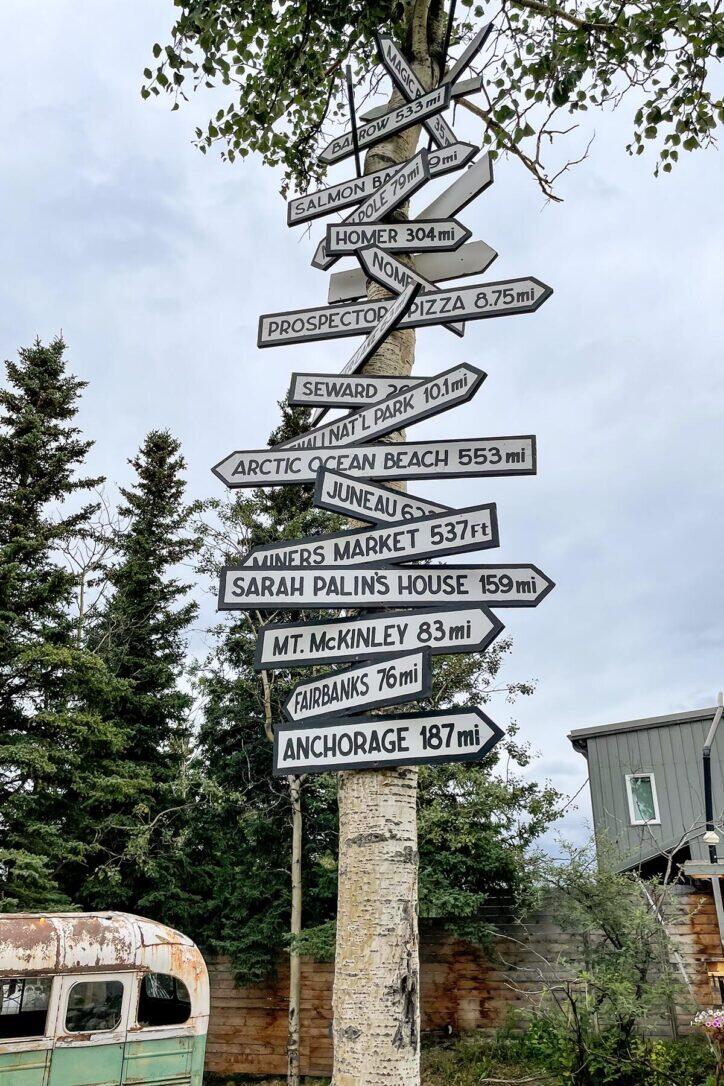
Inside, Chris’s diary entries were strewn around in a haphazard timeline from his arrival at the bus to his untimely end. Many were recorded by his moniker, Alexander Supertramp—an alter ego that was used until his final days. It seemed juvenile now, but I had identified with that boy named Alex. Sharing a name and a philosophy during similar points in our lives had woven a connection in my young mind.
It was difficult to be inside the bus, movie prop or not, and to see the items laid out exactly in the way the hikers who eventually found his body might have. We peered at laminated notes Chris had left to himself and reproduced pictures that shivered when the wind picked up and blew through the purposefully broken window, created for that extra authentic Hollywood magic.
For someone who claimed to abhor technology, Chris did take plenty of photos of himself. Some would even be called selfies in this day and age. He had a camera that he occasionally buried in certain locations around the United States before coming back and retrieving them later, and he took several pictures of himself close to his death. In what has become an almost cult-like snapshot, he can be seen leaning back in a metal chair in front of the bus, his left leg crossed over his right. In the photo, he stares at the camera as though he is daring the viewer to challenge his decision to risk his life for something he believed in.
After seeing the reproduced copy hanging within the bus, I realized why there was a metal chair located right outside the prop bus door. A young woman who looked to be in her 20s handed her phone to a friend and quickly scuttled over to recreate that photo that was printed in the copy of Into the Wild .
“Did you want a picture?” my husband asked. I shook my head. I was beginning to feel odd about the whole situation. I felt uneasy that the bus was here of all places and that it wasn’t the real bus, but a tourist attraction in which death was so close at hand.
There is evidence that points to how Chris was looking to get back and interact with society after his months in the wild. He had highlighted several passages in Tolstoy’s novella Family Happiness that indicated that he was looking to find a new type of connection: “He was right in saying that the only certain happiness is to live for others…” The day after he had marked this sentence, Chris packed up his meager belongings and headed toward civilization. He was thwarted by the raging Teklanika River, which was too dangerous for him to cross. He ended up turning back toward the bus and living out his final days alone.
My mind raced like the Teklnika as I thought about the human connection he must have been missing and how he had spent the last months of his life completely alone. As much as I felt conflicted about the scene playing out at the brewery—the selfies and the hashtags using the myth surrounding his death as a way to gain followers or attention—the site also acted as a means of connecting with our fellow human beings. In a way, Chris was able to find a connection to others, even if it was virtually and metaphysically.
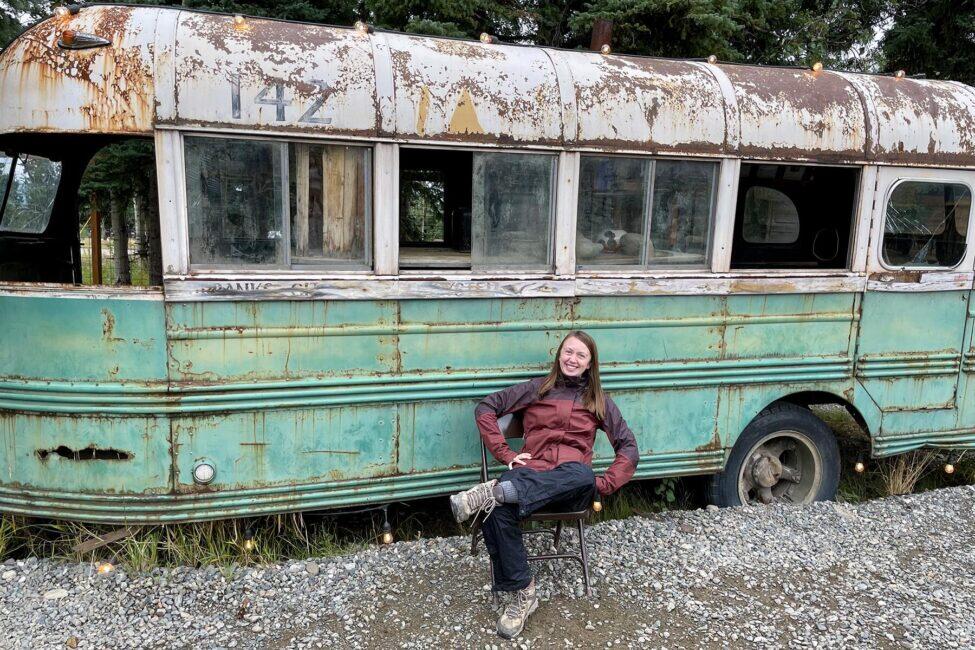
Touring the prop bus made me realize the greater point that Chris had come to. Although humans are messy, unpredictable, selfish, and vain, maybe we were worth the extra time and effort. Maybe we were worth leaving the wild for and finding our way back home.
“You know what,” I said to my husband. “Actually, I think I will get a picture.”
I drained the last of my beer before leaving it on the table and crossing the yard to the bus. Brushing some accumulated rainwater off the metal chair, I took a seat and crossed my left leg over my right, and smiled, just like Chris McCandless once had.
Everything Into The Wild Doesn't Tell You About The True Story
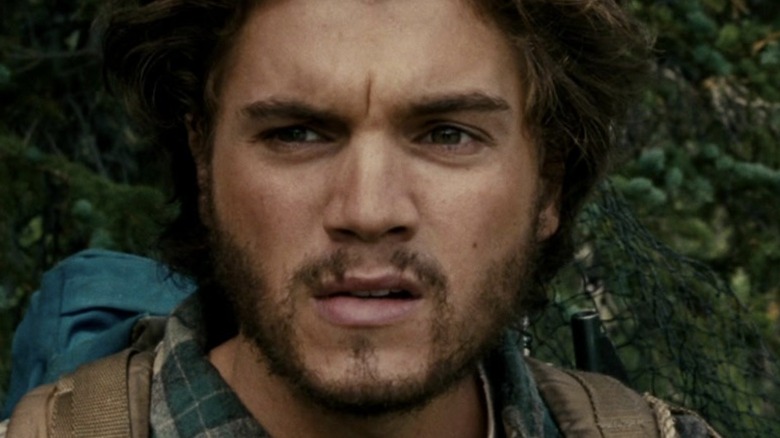
Adventure writer Jon Krakauer's book "Into the Wild" is a journalistic yet personal examination of the life and death of Chris McCandless. After graduating college, McCandless donated his life savings, cut off contact with his family, and vanished, becoming a nomad and living under the assumed identity Alexander Supertramp. For two years he explored America, meeting other travelers and friends before venturing into the Alaskan wilderness and perishing at 24 years old.
Sean Penn read the book twice in 1996 and immediately knew he wanted to make it into a film. As reported by The Los Angeles Times , Penn spent the next decade convincing McCandless' family to sell him the rights to Chris' story. The 2007 film adaptation, "Into The Wild," is an elegiac celebration of McCandless' ( Emile Hirsch ) wanderlust and a glimpse of his tragic death, told from McCandless' perspective and through his sister Carine's (Jena Malone) narration. Penn's film was nominated for two Academy Awards and secured a "fresh" rating on Rotten Tomatoes . Krakauer told The Los Angeles Times , "When [Penn] showed me the rough cut, I wanted to kiss him, I was so happy."
Some, like writer-director Penn, mythologized McCandless, depicting him as an idealistic wanderer who eschewed capitalism and hustle culture while embracing an adventurous life lived to the fullest. Others believe McCandless was a selfish and arrogant rich kid who thought he could survive the wilderness of Alaska, only to find himself tragically unprepared. Keep reading to explore everything "Into The Wild" doesn't tell you about the true story.
The film skips McCandless' high school and college years
"Into the Wild" is a very long film, running two hours and 28 minutes, but it couldn't possibly include everything covered in Jon Krakauer's book. According to Outside , Chris McCandless was the captain of his high school cross-country track team, and enjoyed creating punishing workouts that took him and his teammates into unfamiliar territory to test their limits and endurance.
He couldn't bear the inequities he saw in the world. His mother Billie told Outside, "Chris didn't understand how people could possibly be allowed to go hungry ... He would rave about that kind of thing for hours." Chris also took action on these beliefs. As reported by Outside, he brought a homeless man to live in the family's camper once. As depicted in the film, McCandless graduated with honors from Emory University, where he contributed intense editorials on subjects he was passionate about to the school newspaper (per The A.V. Club ).
The PBS documentary "Return to the Wild" reveals that solo treks across the U.S. were nothing new for McCandless when he vanished in the summer of 1990. Five years earlier, after graduating high school, he bought his Datsun and drove cross-country. According to his father Walt, Chris was gone all summer, rarely checking in. Walt told The New York Times , "He was always an adventuresome, pretty self-contained individual ... it's important to realize that the trip he didn't come back from wasn't his first adventure."
His driver to the trailhead tried to dissuade him
At the beginning of the film version of "Into the Wild," we see Chris McCandless hitchhiking into Fairbanks, Alaska before he's dropped off at the Stampede trailhead. The driver gives McCandless a pair of rubber boots to keep his feet dry, telling McCandless to call him if he makes it out alive. Jim Gallien is the man who dropped McCandless off, and he played himself in the film.
Like many before him, Gallien tried to talk McCandless out of his foolhardy plan. Gallien told NPR , "I said the hunting wasn't easy where he was going ... When that didn't work, I tried to scare him ... But he wouldn't give an inch. He had an answer for everything I threw at him." Walt McCandless wouldn't have been surprised by this, telling Outside , "If you attempted to talk him out of something, he wouldn't argue. He'd just nod politely and then do exactly what he wanted."
McCandless gave Gallien his watch at the trailhead, despite Gallien's protestations. As reported by NPR, McCandless told Gallien he would throw the watch away, saying, "I don't want to know what time it is. I don't want to know what day it is or where I am. None of that matters." Emile Hirsch told The East Bay Times that he actually wore McCandless' watch in the film after Gallien lent him the timepiece.
McCandless has been accused of legal infractions
The Anchorage Daily News explored the legal infractions that McCandless was accused of, beginning with McCandless abandoning his car in Arizona, as depicted in "Into the Wild." This article claims the car had an expired registration, no insurance, and was left in a region of the park closed to cars.
The New Yorker reported in 1993 that McCandless got a ticket for hitchhiking after abandoning his car in Arizona and alleged that he broke into a cabin in the Sierra Nevada mountains to steal food. In the film, we see McCandless dismiss rules repeatedly — as when the park ranger says he needs a permit to kayak the Colorado River — so some of these accusations are plausible. According to NPR , McCandless was scornful when Jim Gallien asked if he had a hunting permit before hiking the Stampede Trail, saying, "Hell, no. How I feed myself is none of the government's business. F*** their stupid rules."
According to Jon Krakauer's book , McCandless was also arrested for hopping trains in Colton, California. The accusations didn't stop after McCandless disappeared in Alaska. The Anchorage Daily News, which called McCandless a poacher, suggested that McCandless broke into and vandalized cabins in the area while living on Bus 142. Gordon E. Samel, one of the hunters who found McCandless' body, suggested that the moose McCandless shot in Alaska was caribou ( via Reuters ). McCandless' journal hints that he killed it at the beginning of June, meaning it was killed out of season ( via Huntin' Fool ).
McCandless' parents visited Bus 142
The screen adaptation of "Into The Wild" explores nothing that happened after Chris McCandless' death, other than sharing when his body was found by hunters. According to The A.V. Club , Jon Krakauer's bestselling book explores McCandless' life and death, as well as how his death affected the people he left behind. Krakauer interviewed McCandless' family, and the people he met during his travels, to piece together what happened to McCandless during the two years preceding his death. During his research, the writer developed a relationship with the McCandless family.
According to Treehugger , after McCandless' death, Krakauer and McCandless' parents visited Bus 142 via helicopter. Walt and Billie installed a memorial plaque on Bus 142, leaving an emergency kit, and a note asking visitors to please "call your parents as soon as possible." During the 2014 PBS documentary "Return to the Wild," the film crew followed McCandless' sister Carine and two of their half-sisters as they visited Bus 142, 22 years after his death. This was Carine's third visit to the bus, but it was the first time their half-sisters saw where their brother died.
After learning of Chris' death, Ronald Franz became depressed
According to NPR , the film's Ron Franz (Hal Holbrook) was based on a real person. Holbrook was nominated for an Oscar for his performance in "Into the Wild." Tripline claims Franz's real name was Russell Fritz. As reported by Treehugger , McCandless had a huge effect on Franz/Fritz, the elderly man who offers to adopt McCandless in the film before he departs southern California for his ill-fated trip to Alaska.
We only briefly meet Franz in the film, but Krakauer's book further explored the impact that meeting McCandless had on Franz's life. The New York Times reports that after parting ways, McCandless wrote Franz, saying, "If you want to get more out of life, Ron, you must lose your inclination for monotonous security and adopt a helter-skelter style of life that will at first appear to you to be crazy." After receiving a letter from McCandless, Franz put his belongings into storage and set out into the desert, inspired to shake things up.
In reality, Franz seemed to sit in the desert waiting for McCandless to return for eight months. In Chapter 6 of Krakauer's book , we learn that while returning from the desert, Franz picked up a couple of hitchhikers who told him of McCandless' death in Alaska. After learning of the young man's death, a distraught Franz renounced his faith in God, claiming to be an atheist, and drank a bottle of whiskey after decades of sobriety.
The real Chris McCandless was not the film's idealistic free spirit
As reported by The A.V. Club , Jon Krakauer's book acknowledged McCandless' inflexible and argumentative nature, calling him a "highly polarizing subject," while also depicting him as charismatic and extroverted. Krakauer told NPR , "He was an intense kid. He didn't see the world in gray at all, everything was black and white, right or wrong, and he was a young man who wanted to test himself."
Sean Penn 's "Into the Wild" hinted at McCandless' stubborn side by showing McCandless arguing with his parents about not wanting them to buy him a new car for graduation, dismissing the need for a permit to kayak the Colorado River, and refusing much of the charity and help that flowed his way. While the film doesn't ignore his stubbornness, it characterizes McCandless as a more laid-back, idealistic free spirit who rejects his parent's affluent lifestyle and the rat race.
Walt McCandless told Outside , "He was good at almost everything he ever tried, which made him supremely overconfident." Tragically, it was McCandless' inability to accept help and heed good advice that led him down the lonely and tragic path to his death on Bus 142.
Chris McCandless could have crossed the river downstream
Late in "Into the Wild," McCandless packs up his stuff and cleans up under a makeshift shower before hiking toward society after surviving off the land for over two months. When McCandless reaches the river, which was frozen when he arrived, he sees the hat Jan (Catherine Keener) knitted for him, skewered on a branch where he left it to mark his route. Unfortunately, McCandless returns to the bus after failing to cross the Teklanika River, which is swollen from snow melt.
Brent Keith, an Alaskan guide, told Men's Journal , "I just don't get why he didn't stay down by the Teklanika until the water got low enough to cross. Or walk upstream to where it braids out in shallow channels. Or start a signal fire on a gravel bar." The New Yorker shared that less than a mile downriver from where he crossed in April, there was a hand-operated tram he could have used to cross the river when he wanted to leave in July.
According to Forbes , a recent study by hydrologists at Oregon State University suggested that McCandless was trapped because of a "freak hydrological event" exacerbated by run-off from the Cantwell Glacier. David Hill, who co-authored the study, told Forbes, "Streamflow in summer 1992 was more variable than usual because of the quick snowmelt followed by periods of heavy rain," adding if he had tried to cross earlier or later in July the results might have been different.
Carine McCandless alleges that she and Chris experienced domestic abuse
Jon Krakauer's book refers obliquely to the McCandless family's toxic dynamic, characterizing their father Walt as "overbearing" and their home as unhappy (per NPR ). Carine confided in Krakauer about the abuse while he was researching "Into The Wild," but she told Outside , "I made him promise — before I let him read Chris's letters, before I told him these things — that he wouldn't expose any of it in the book."
By the time Sean Penn was making his film adaptation, Carine was older and more open about the abuse she alleges she and Chris experienced and witnessed growing up. The film depicts domestic abuse in a couple of flashbacks. In 2014, Carine wrote her memoir, "The Wild Truth," revealing more about the alleged abuse. Per Outside , Walt and Billie McCandless have denied the accusations, describing her memoir as fiction.
In the PBS documentary "Return to the Wild," Carine shares letters Chris had sent her, hinting at his plans to disappear and cut off all contact with their parents. Carine told Outside that she didn't write the book to defend her brother or villainize her parents, but because she wanted people to finally know the entire story and understand what Chris was running from and how much pain he was in when he left. Carine told Newsweek , "I hold them accountable for his disappearance. But I certainly don't blame them for his death."
If you or someone you know may be the victim of child abuse, please contact the Childhelp National Child Abuse Hotline at 1-800-4-A-Child (1-800-422-4453) or contact their live chat services .
The film glosses over Walt McCandless' other family
Sean Penn's "Into the Wild" explains how Chris McCandless was devastated to learn that he and his sister Carine were born out of wedlock, while their father was still married to his first wife. The film makes it seem like Walt's first marriage was a long-held family secret and Chris and Carine didn't have a relationship with their half-siblings. This was not the case. In a segment for ABC News , Carine and two of her half-sisters verified that they grew up together, going on family vacations and witnessing domestic violence together.
According to the PBS documentary "Return to the Wild," when Chris was five years old, Walt and his first wife Marcia separated and she was granted a restraining order because of alleged domestic violence. They divorced, and she moved their children from California, where the kids were born, to Colorado. During summer vacations, they would travel from Colorado to visit their father and half-siblings in Annandale, Virginia, where Walt had moved for a job with NASA.
If you or someone you know is dealing with domestic abuse, you can call the National Domestic Violence Hotline at 1−800−799−7233. You can also find more information, resources, and support at their website .
The cause of McCandless' death has been contested
Per The New Yorker, coroners declared starvation the cause of Chris McCandless' death. The film postulates, much like Jon Krakauer did in his early investigation for Outside , that McCandless had mistaken wild potato for wild sweet pea, which is poisonous. In his book, Jon Krakauer suggested a different conclusion, theorizing that the seeds contained a detrimental alkaloid. Krakauer drew these conclusions from McCandless' journal and the undeveloped photographs he left behind.
Thomas Clausen, the chair of chemistry and biochemistry at UAF, disproved Krakauer's theory, telling Men's Journal , "I tore that plant apart. There were no toxins. No alkaloids. I'd eat it myself." In a 2013 article for The New Yorker , Krakauer doubled down on his hypothesis, referencing a paper using evidence gathered from World War II concentration camps to say that the seed pods of wild potatoes weakened McCandless, making it impossible for him to hunt, forage or hike to the highway.
Per NPR , Krakauer has revisited his theory repeatedly in the years after publishing "Into the Wild," leading to multiple book revisions and lab tests. In 2015, Krakauer believed he had found the answer: an amino acid called L-canavanine. Krakauer co-authored and published a scientific paper with Jonathan Southard, a biochemist at Indiana University of Pennsylvania. Krakauer told NPR, "It screws up your ability to metabolize, so you essentially starve," explaining that this amino acid is in the seed pods, which is why natives only eat the roots.
Into the Wild inspired people to travel to the magic bus
Both the book and the film adaptation of "Into the Wild" have inspired scores of people to hike the Stampede Trail to see Bus 142, where Chris McCandless died in 1992. In the 30 years since his death, the flow of travelers, often referred to as pilgrims, hasn't been staunched. In 2019, Treehugger reported more than 100 people visit Bus 142 annually.
Claire Ackerman, a 29-year-old hiker visiting from Switzerland, died attempting to cross the Teklanika River in 2010. According to the Anchorage Daily News , her boyfriend, a Frenchman named Etienne Gros, claimed Bus 142 was not their destination. But in 2013 Gros admitted to Outside that after being told the Teklanika River was passable by other hikers in Denali National Park, the pair changed their plans. Gros built a memorial along the river where Ackerman died.
Also in 2013, a ranger told Outside that 75% of the rescues in the area occurred on the trail to the bus, saying, "Obviously, there's something that draws these people out here," while adding that the allure escaped them. Carine McCandless and Ackerman's family petitioned for a footbridge over the river, but their request was ignored. The Los Angeles Times reported that Veranika Nikanava and her husband were hiking to Bus 142 when she drowned in Teklanika River in 2019. According to BBC News , numerous other rescue missions and the two deaths finally prompted talk of removing the bus.
Bus 142 was moved from the original location
According to Greenbelly , the Fairbanks City Transit bus in which McCandless spent his final days was brought out to the spot near the Teklanika River by the Yutan Construction Company, which had purchased the decommissioned bus. The company outfitted the bus as a temporary shelter for workers who were building an access road to nearby mines. When the work was done in 1961, the bus was left behind and continued to be used by hunters and hikers traveling through the area.
In June 2020, in response to two drowning deaths and many rescues, the Alaska Army National Guard removed Bus 142 from the location where McCandless perished. As reported by The New York Times , a CH-47 Chinook helicopter airlifted the bus to a nearby location where it was loaded on a trailer and transported to an undisclosed location. Dan Saddler, a spokesman for the Alaska Department of Natural Resources, told the Times, "Mostly, we're glad that we've taken action that will avoid future deaths and injuries and search-and-rescue costs."
Carine McCandless told the Times, "Though I am saddened by the news, the decision made by Alaska D.N.R. was with good intentions toward public safety." In 2021, The Anchorage Daily News reported that at some point in the future, Bus 142 would be displayed at The University of Alaska at Fairbanks' Museum of the North , after the Engineering Learning and Innovation Facility finished preparing the bus for exhibition.
Chris MaCandless' family published a book of his photos
In the PBS documentary "Return to the Wild," Chris McCandless' parents, Walt and Billie, talked about the undeveloped film that was recovered with their son's body and returned to them after his death. Walt said, "Billie couldn't look at them. The pictures. She just couldn't do it. It has hard for me, but I did." Walt shared how he catalogued the images and scanned over 600 pictures depicting Chris' travels during the two years after he graduated college and dropped out of society.
Some of these photos are self-portraits Chris took using a timer, including the portrait we see at the end of "Into the Wild." In 2011, Walt and Billie published a book, "Back to the Wild," featuring Chris' photography accompanied by captions written by Walt. According to Outside , Chris' sister Carine wasn't pleased that her parents published the book, thinking it obscured her brother's tragic truth . Regardless of their motivations, the collection of photos documents Chris' experiences, as did Krakauer's book and Sean Penn's film. Despite Chris' tragic end, "Into the Wild" is often hailed as one of the best movies about people surviving in the wilderness .
2-FOR-1 GA TICKETS WITH OUTSIDE+
Don’t miss Thundercat, Fleet Foxes, and more at the Outside Festival.
GET TICKETS
BEST WEEK EVER
Try out unlimited access with 7 days of Outside+ for free.
Start Your Free Trial
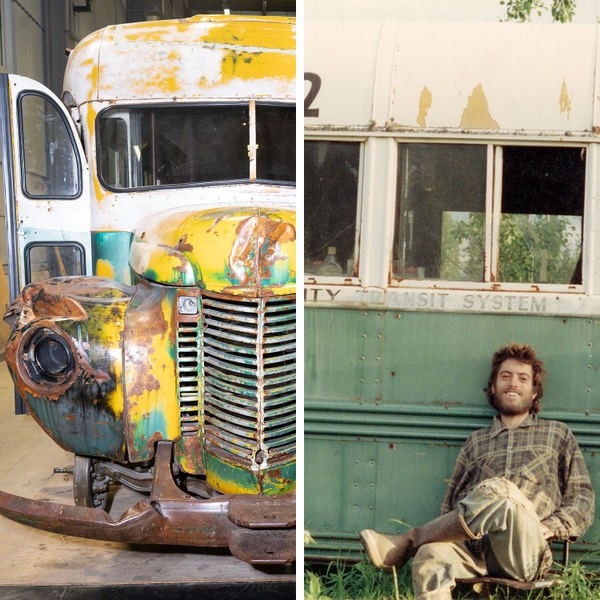
The ‘Into the Wild’ Bus Was a Pilgrimage Site in the Wilderness. Can It Hold Up in a Museum?
The rusty coach where Chris McCandless spent his final days captured the imagination of people all over the world and inspired hundreds of seekers to make dangerous treks to reach it. Now a dedicated team of curators in Alaska have given it new life as a fascinating exhibit—one that tells the story not just of McCandless, but of modern Alaska.
Heading out the door? Read this article on the Outside app available now on iOS devices for members! >","name":"in-content-cta","type":"link"}}'>Download the app .
On June 18, 2020, Carine McCandless got a call from Alaska’s Department of Natural Resources. Corri Feige, the commissioner at the time, wanted to give her a heads-up: the abandoned bus where Carine’s brother, Chris, had briefly lived and then died was at that moment dangling in midair below a Chinook helicopter, on its way to a flatbed trailer and then to storage in a government facility. The bus made famous by Into the Wild was finally being hauled out .
Carine didn’t have a clue that this might be coming, but she wasn’t entirely surprised. The bus, which sat roughly 20 miles down a rough 4×4 trail from the nearest highway, had been a source of concern to Alaskan authorities for years. Too many visitors, inspired by her brother’s story, had gotten into trouble while attempting to visit the site; too many formal and informal rescues had been necessary. In the previous decade, in separate incidents, two young women died on their treks . Both drowned while attempting to cross the cold, fast-moving Teklanika—the same river that had barred Chris, who was 24 when he died, from retreating to the highway as his food supply ran out.
In the eerily quiet early months of the COVID-19 pandemic, it seemed that someone in the local government had decided that now was the time to remove the temptation of the bus for good.
Carine understood why she hadn’t been given more warning. “The commissioner didn’t know me,” she says. “She didn’t know if I was going to contact a bunch of people and tell them to go surround the bus and sing ‘Kumbaya.’ ” Carine wouldn’t have done that, but she didn’t blame the state for holding its cards close.
The commissioner let her know that the department intended to wait a few days to announce the removal so the family could digest it privately. But even in the relative emptiness of rural Alaska news travels fast, and a famous bus in flight is hard to miss. As the two women talked, Carine’s phone began to ping. And ping. Text messages and social media notifications poured in—an experience shared by other people with a connection to the story. (A short while later, Eddie Vedder, the Pearl Jam front man who created the haunting soundtrack for the 2007 movie version of Into the Wild, told Carine: “My phone hasn’t blown up this fast since the Cubbies won the World Series!”) Even before Carine checked any of those messages, she had a feeling that the news was out.
Sure enough, a resident of the Healy area, Melanie Hall, had gone for a walk on Stampede Road—the paved portion of the historic overland trail that leads to where the bus sat for 60 years—when she spotted a helicopter with an enormous load. That looks like a bus, she thought as it flew closer, and moments later she knew: it was the bus. By the time Hall made it to a nearby gravel pit where the Chinook set the large vehicle down, another neighbor had arrived, and so had the borough mayor. As the bus was loaded onto a long trailer, Hall snapped photos she later posted on Facebook. A friend reposted them, and from there the pictures were shared and shared. The images went viral, and the state government began fielding media inquiries about the removal.
The Department of Natural Resources didn’t have much to say at first, except that the bus was being moved to an undisclosed location, its long-term fate also under wraps. Feige, the commissioner who’d contacted Carine, issued a statement. “We encourage people to enjoy Alaska’s wild areas safely, and we understand the hold this bus has had on the popular imagination,” it said. “However, this is an abandoned and deteriorating vehicle that was requiring dangerous and costly rescue efforts, but more importantly, was costing some visitors their lives. I’m glad we found a safe, respectful and economical solution to this situation.”
That night as I packed for a canoe trip, I scrambled to put together a news item for Outside Online. “There’s something strange and bittersweet about knowing the story is over now,” I wrote.
But I was wrong. A new chapter in the long, layered story of Bus 142 had just begun.

The origins of the bus are murky. It was built by International Harvester, a now defunct American company that thrived in the first half of the 20th century, challenging the likes of Ford and John Deere for market dominance. Primarily a tractor maker, the firm got into military procurement during the Second World War, and alongside a slate of armored personnel carriers, cargo trucks, and other military vehicles, it began turning out passenger buses.
Vehicle identification numbers weren’t introduced until the mid-1950s, and if there ever was a serial number somewhere on this particular vehicle, it has long since been lost to rust. But we know that its tires, mounted on split rims, were military-issue, dating from 1947. We also know that its original paint was military gray-green. It most likely entered Alaskan territory, in the aftermath of the war, via the Alaska Highway. It might have served as transportation on a base for a period of time. At some point it acquired a new coat of paint, the bright yellow-orange of a school bus. Sometime after that it was repainted yet again, in the white and green familiar to those of us who have followed the saga, and put to work as a city bus in fast-growing Fairbanks.
Alaska’s ascension to statehood in 1959 brought an influx of money to build and improve its roads. Around that time, the bus was damaged and retired from public service, and from there its story is easier to plot. The engine was pulled, and a massive tow hitch was welded to the nose. Sometime between 1959 and 1960, Jess Mariner, a member of a road construction crew, bought the remaining shell, along with another old bus, to use as housing for his wife and children while he worked on a project funded by the new government money: upgrading the Stampede Trail, a rough overland route near Denali, to facilitate access to the antimony mine at its terminus. Hauled behind heavy equipment, the bus offered warm shelter for the Mariners as the crew worked its way deep into the Alaskan bush. But when a front wheel snapped off its axle, most likely in early 1961, the family moved on and the bus was abandoned.
Soon it had a new function. The Stampede Trail lies within a long, horizontal rectangle of state land that juts into the northeastern corner of Denali National Park. With protected acreage on three sides, it’s a popular corridor for moose hunters. The Mariners’ erstwhile mobile home became an informal public-use cabin, a shelter for people as they moved through the area each fall. Locals added mattresses to the bare-metal bed frames, and at some point the Mariners’ vertical, barrel-style woodstove was replaced by a horizontal one. Nearly three decades passed, and then everything changed.
In the waning days of 1992, the January 1993 issue of Outside began arriving in mailboxes and on newsstands across America and around the world. It included a long feature story by Jon Krakauer, “Death of an Innocent,” which introduced readers to a young, adventurous drifter from the northern Virginia suburbs, Christopher J. McCandless, who had disappeared from his home and traveled across the continent under the alias Alexander Supertramp. After many months on the road, he made it to Alaska during the still-frozen spring of 1992 and hitchhiked to the outskirts of Denali. From there he walked into the bush, intending to live off the land, and made a home for himself in an abandoned bus. He died there in mid-August, and his body was found by moose hunters in early September.
The story created a sensation. Krakauer wrote later that it “generated more mail than any other article” in Outside’ s history. By 1996, he had fleshed out McCandless’s life and death in a book—the famous bestseller Into the Wild. Eleven years after that it was revisited again, as a beautiful feature film.

The pilgrimages began not long after McCandless’s story became public, and they increased dramatically when the movie came out. Visitor numbers went from dozens to hundreds; the arrival of social media likely helped drive hikers to the bus as well. Readers and viewers had always been divided about the story—many admired McCandless or recognized their own adventurous yearnings in him; others criticized, sometimes very harshly, what they considered his inexperience and lack of humility about the demands of Alaska’s backcountry. Add in summer after summer of expensive rescues and the two deaths—the first in 2010, the second in 2019—and by the time the bus was flown out in June 2020, it was easily the most polarizing vehicle in Alaskan history.
Pat Druckenmiller found out about the bus’s removal on the same day Carine McCandless got her phone call. “It was on the local news immediately,” says Druckenmiller, director of the University of Alaska Museum of the North (UAMN). The museum, a distinctive building at the heart of the Fairbanks campus, sits on a hilltop with a view of Denali and the wide curtain of the Alaska Range. “I know I was not the only person in this building who, when we saw pictures that day in the media or heard about it on the radio, had the same thought,” he says. “Gosh, what are they going to do with the bus?”
Within a day or two Druckenmiller, along with several colleagues who included senior collections manager Angela Linn, had decided to put the Museum of the North forward as a permanent home for the vehicle. Though it’s located on a university campus, the UAMN is a broadly focused museum; its mandate is to draw from art, archaeology, natural science, and other areas to tell stories about the interior of Alaska and the wider circumpolar world. The curators were among several parties interested in the bus; another Fairbanks-based institution, the Fountainhead Antique Auto Museum, also put its name in, and some private parties outside the state did, too.
At the UAMN, interest went well beyond the McCandless story. “It’s fascinating on its own,” says Druckenmiller. “Because it’s such a touchstone for so many different things, it has the power to tell stories about Alaska, about its people, about its culture and natural history, that are all tied to it in many different ways.” Plus it had a following—a level of celebrity unmatched by anything in the museum’s collection. “So for me it was like, this is a really powerful object.”
With connections to statehood, the military, the postwar boom, mining, road construction, hunting, and outdoor adventure, Bus 142’s story touches on nearly every big moment in modern Alaskan history. In a curator’s hands, it’s the kind of thing that can be used to speak to a lot of different people about a lot of different things. But bringing the bus to the UAMN would be fraught, because it remained controversial. Detractors wouldn’t like it getting a new round of attention, and fans still resented that it was removed from the wild.
A few weeks after the bus was removed, the museum team learned that the UAMN had been selected to take custody of it. Now the challenge was to build an exhibit that proved the object’s worth to as many people as possible.

Creating a large permanent museum exhibit is both a tangible physical process and an intellectual one. The museum staff knew that they would have to put together an advisory team to help think through ways to position the bus and its role in Alaska’s history. Linn recalls them asking, “Who were the people that were going to be part of that team, in order to capture this huge range of perspectives?”
Carine was one of the first names on the list. She was young when Chris died—just 21—and at first her parents spoke for the family. But in the years since, she has become an important point of contact for her brother’s admirers, and received thousands of emails and letters about what he meant to people. She became a more prominent figure after her bestselling book, The Wild Truth , was published in 2014. These days she often speaks in schools and colleges, where her book and Krakauer’s are sometimes assigned side by side .
Carine, who is now 52, still lives in Virginia, where she works as a writer and editor. She knew, as soon as she heard about the removal, that she would likely need to serve as a bridge between authorities in Alaska and the Into the Wild community. With her friend Erik Halfacre, a former Alaskan hiker and guide who for years promoted safer travel to the bus, she formed a nonprofit, Friends of Bus 142 . “That was the next step,” Halfacre says. “What are we going to do to try to get this thing a long-term home?”
Once the state confirmed that the bus was headed to Fairbanks, both Carine and Halfacre joined the advisory council. So did Mickey Mariner Hines, who lived in the bus as a young child after her father bought it. (Jess Mariner also shot footage of the bus at the time, a valuable resource for museum staff and now part of the collection.) They were joined by a couple of local journalists who’d written about the bus, a few historians, a biologist from Denali National Park, citizens of nearby Athabascan tribes, several museum staff, and others. For the first six months, this large group gathered on Zoom to brainstorm themes and narratives.
The bus had to be free for anyone to see—that was a requirement built into the agreement with the state. And there were other guardrails dictated by the scope of the project. “From an exhibit standpoint, the collection calls the shots,” says Roger Topp, the museum’s director of exhibits. Due to its size, the bus would have to be displayed outside. A shelter would need to be built, to protect it against the worst of Alaska’s weather, and repairs performed to keep the interior sealed and dry.
Carine McCandless knew, as soon as she heard about the removal of Bus 142 from the wilderness, that she would likely need to serve as a bridge between authorities in Alaska and the Into the Wild community.
In the end, the group settled on three main components. The first is the outdoor display: the bus itself, placed in an open-sided shelter in a pocket of boreal forest behind the museum parking lot, accompanied by interpretive panels at the site and along the trail leading to it. Anyone will be able to visit, observe, and even touch the bus’s exterior; access to the interior will be limited to guided tours only.
The second exhibit is a much smaller display inside one of the main museum galleries, highlighting objects from and related to the bus that are too fragile to be left in situ. The national guardsmen who removed the vehicle from the Stampede Trail were careful to preserve the items left inside and scattered around it over the years. These arrived at the museum in two large crates that have since been cataloged and stored. They form a curious mixture: tributes to Chris and his story—a half-burned dollar bill, a dream catcher, Tibetan prayer flags—alongside plausibly useful items left behind for some hiker who might need them, including a crank-powered flashlight, a plastic trowel, and fire-starter blocks. Also in the collection are a folding camp chair believed to be the one Chris sat in for his self-portrait and the mattress on which he died. (The chair will be part of the indoor display; the mattress, says Linn, will be stored by the museum out of sight of the public.)
The third piece is digital, and while the indoor and outdoor exhibits won’t be open until 2025, some virtual components are already coming together. Museum staffer Della Hall, project manager for the conservation phase, spent several days combing every surface of the bus for graffiti, taking digital photos of each carving or tag. The 700-odd photos have been compiled into an album online , with visitors encouraged to claim their tag and tell the story of their visit to the Stampede Trail.
The album caters specifically to a community already heavily invested in the bus. But the exhibit will range much more widely, examining successive waves of incursion and extraction that have defined Alaska since its colonization. It will explore the roles of mining and road construction in the creation of the state’s modern interior. It will touch on its more than 1,500 missing persons, a disproportionate number of whom are Indigenous, and ask an uncomfortable question: Why does the world care so much about one young man and tend to ignore so many others? And it will consider the role of literature, of books like Into the Wild, in shaping cultural ideas about Alaska.
The plan is to use the bus as a prism, each facet shedding light on another aspect of a much larger story.
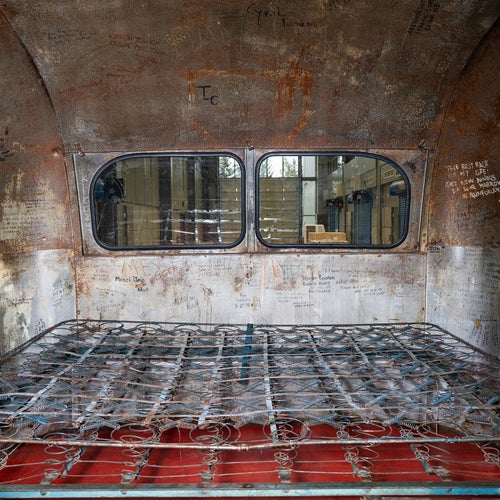
On a sunny afternoon last July, I visited the high bay, the enormous engineering lab at the University of Alaska Fairbanks where conservation work on the bus was completed. I had driven into Fairbanks that morning from the Alaska-Yukon border town of Tok, braking for moose and dodging potholes. I made it up the hill to campus and met Angela Linn in the museum lobby, and then we hopped in her car and drove over to the high bay. After years of reading, thinking, and writing about the bus—after looking at photos and watching the movie—I would finally see it for myself.
Linn used a swipe card to unlock the access door, and I paused just inside the threshold, unprepared for how incredibly familiar the object itself seemed. I knew this bus. I knew its rusting, green and white paint job, mottled with yellow patches from the older coat of paint showing through. I knew its rounded roof and bulbous fenders. I knew its blunt black letters: FAIRBANKS CITY TRANSIT SYSTEM.
The bus looked exactly how I expected it to look. And the museum would like it to stay that way. In October 2022, Linn’s team received a $500,000 grant from the federally funded Save America’s Treasures program to perform the work needed on the bus. That allowed them to hire an expert group of conservators from Pennsylvania-based B. R. Howard and Associates.
In museum terminology, to restore an object means to turn back the clock, to make changes with the aim of returning it to a previous state. Had this been the goal, they could have used the information available to them—photos, footage, recollections of people who’d visited the site over the years—to make the bus appear as Chris found it in 1992. Or they could have spun the dial back even further, to the version abandoned on the trail at the start of the 1960s. Instead, the work they did is known as conservation—keeping the bus the way it is now, locked in time.
“Because [the bus] is such a touchstone for so many different things,” says Pat Druckenmiller, director of UAMN, “it has the power to tell stories about Alaska, about its people, about its culture and natural history, that are all tied to it in many different ways.”
We circled the vehicle and Linn talked me through some of the work that had been done over the past six months or so. “Let me see, the windows were almost entirely shot out or broken,” she began. The conservators removed the original metal window frames to have them fitted with new glass, and a local company donated the panes, along with the labor to reassemble everything. Technically, that was restoration and not conservation, but also a necessary step to keep the weather at bay.
The paint, exposed to decades of Alaskan winters, was flaking off inside and out. In some areas of the exterior the problem was easy to manage, but inside the bus, where every surface was covered with messages left by visitors, preserving the graffiti meant attending to each individual flake.
“It was kind of like cornflakes, if you can imagine,” says Brian Howard, the head conservator and cofounder of B. R. Howard. “It was very brittle and had lifted and cupped, but still loosely adhered to the metal substrate.” The team applied a liquid consolidant to hold the paint in place, then ironed the flakes into a smooth layer. In some places, that meant using a syringe and going flake by flake. Howard recalls spending two days on a single square foot.
Rust was a big concern. Any exposed patches had to be brushed smooth, removing the surface oxidation before a layer of acrylic resin could be applied. And we aren’t talking about a few bits: there was rust in the interior of the bus, inside and outside the barrel stove, on the hood, and across the entire undercarriage. Compared with the graffiti preservation, Howard says, “removing corrosion underneath the bus was not delicate work, but it had to be very thorough.” The underside was coated with layers of mud dating back to the 1950s, and all that caked-on earth held moisture. Howard’s team spent ten days lying on their backs, clearing away dirt and rust with wire brushes before rolling the resin on.
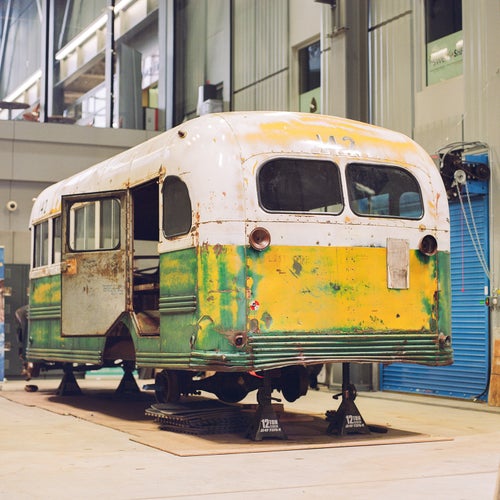
From January to April of 2023, working in teams that rotated in and out of Alaska from Pennsylvania, the conservators stabilized the bus. They scraped away mosses and lichens from its gutters; pulled up ancient layers of rotting carpet, linoleum, and plywood on the floor (preserving a sample of each, then installing a new plywood and linoleum floor), and documenting everything as they went.
The process required dozens of individual decisions, each influencing how the public would experience Bus 142. Most glaring were the four gaping holes that had been cut into the roof and the floor to allow the bus to be hauled out by helicopter. The holes had to go: the bus needed to be watertight before it could be displayed outdoors. So the cut metal panels were fastened back in place, and the paint job on and around them restored—with one exception. The museum team decided to leave the lines where the panels were cut visible. Like scars left by surgery, they were a reminder: the flight out was part of the bus’s story now, too.
Then there was the 142 that appeared in black numerals near the top of the bus on the driver’s side. It’s visible in the camp chair photo, and often appears in images taken by visitors to the site. But by the time the bus was helicoptered off the Stampede Trail, the number had been carefully, thoroughly shot to hell.
At the Friends of Bus 142 website, nearly three decades of photographs have been crowdsourced and organized in chronological order. For the conservators and museum staff, they proved to be an invaluable resource—a month-by-month record of decay that allowed them to pinpoint the timing of the sabotage by gunfire. “If you look at the photos,” says Linn, “you can see exactly when it happened.”
The obliteration of the 142, along with the local hostility those bullet holes represented, were part of the bus’s history. But to Carine, preserving the effacement risked emphasizing negativity. “You have people who wanted to hike to the bus from all corners of this planet,” she says. “Now it’s going to be even easier to see. You’re going to have people come to the museum, and they’re going to be emotional, and they’re going to want to take their picture in front of it. If you take that away from them, you’re going to minimize the satisfaction of your audience.”
“You’re not dishonoring the truth by putting the 142 back,” she says. “The truth is this whole story and what it means to people.”
The team settled on a compromise. A new piece of metal, painted with a new 142, was affixed to the damaged exterior and made to look seamless. But from the inside you can still see the holes, along with each twisted curl of metal blown inward by the shot. You can reach out, as I did, and feel the jagged edges.
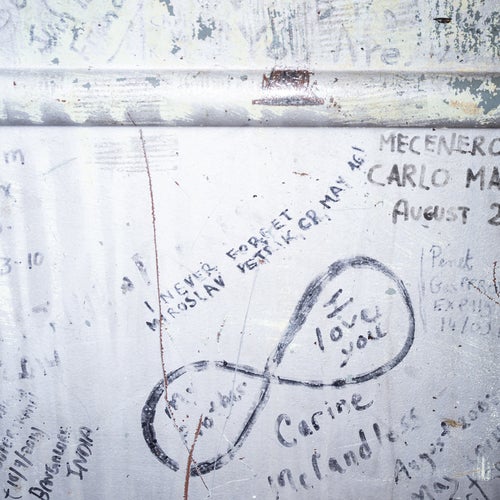
I first read Into the Wild not long before the movie came out. At the time, I was around the same age Chris was when he died. It was early in my writing career, and I worked for a website blogging about travel news and trends. That’s how I learned about the dilemma of the bus, the hikers who sought it out and the rescues they sometimes required. Two years later, at 27, I set out on my own big, wild adventure. I bought an aging Jeep and drove west across Canada to the Yukon, where I now live.
I often dreamed about hiking and camping; I dreamed of writing for Outside someday. I was, you could say, in the prime McCandless-admiring demographic. But I never found myself relating to Chris the way so many others had. I wasn’t infuriated by his choices, and I felt sadness and empathy for how his story ended. But I’d always had trouble wrapping my head around the kind of isolation he sought, and I hadn’t understood his decision to cut off all contact with his family.
That changed when Carine published The Wild Truth. She described a harrowingly abusive childhood. She wrote about how their parents’ home had been a facade, an apparently perfect suburban existence that obscured the violence and unhappiness within. She wrote that the happiest times she and Chris had, their reprieves, were in wild places. Suddenly, the pieces of Chris’s story that never made much sense to me—the fierceness of his disdain for conformity, his drive to push deeper and deeper into wilderness adventure, his willingness to disappear into a new life—clicked. It all made sense to me then.
On that summer afternoon in Fairbanks, when Linn pushed open the folding door of the bus and let me climb inside, I had a similar experience: a moment when something that once puzzled or eluded me snapped into focus. The bus was dim, and smaller than the city transports I’m accustomed to, but the space was powerful. A decade earlier, I interviewed a man who’d made several treks down the Stampede Trail, and he told me then that he believed the bus had a kind of spiritual magic to it, a mystical ability to confer peace on its visitors. He attributed that power to Chris himself—in a residual way, rather than a haunting—and at the time, hearing that, I probably stifled a groan. But now I wondered: If enough people imbue an object with their own potent beliefs, can it send that power back out, even to a nonbeliever like me?
I felt like I had stepped into a quiet corner of a temple or church. Only instead of being awed into silence by soaring stone arches or ancient mosaics or the dappled light of stained glass, I was staring at messages left by hundreds of visitors over the years.
I felt like I had stepped into a quiet corner of a temple or church. Only instead of being awed into silence by soaring stone arches or ancient mosaics or the dappled light of stained glass, I was staring at messages left by hundreds of visitors over the years, the notes that B. R. Howard had preserved and Della Hall had cataloged and photographed so meticulously.
“I don’t want a never ending life but to be alive while I’m here,” read one, carved into the paint.
“Live before you die.”
“Get busy living.”
“I vow to live my life with truth, love, and happiness, always.”
“You’ve inspired me.”
“Thanx 4 the inspiration Chris!”
“He was here.”
“Thank you Chris.”
“I wouldn’t be the man I am today without your story.”
There were messages in other languages. ( “Chris, Merci de m’avoir ouvert les yeux.” ) There were snippets of poems and quotations from literature. (Tolstoy’s famous line “I want movement, not a calm course of existence,” and a verse from Robert Frost’s “The Road Not Taken.”) In one corner, there were messages left by Carine during her own trips to the bus.
The sheer volume of scribbles, and the earnestness of what they expressed, were overwhelming. I was deeply, unexpectedly moved. If reading Carine’s book had helped me understand Chris, seeing the bus for myself helped me understand the people who’d followed him down the Stampede Trail.
Maybe that’s the magic of Bus 142 finding its way to the Museum of the North: It’s a chance for everyone who sees the exhibit to expand their understanding of a complex, multilayered story. For those who come looking for something more personal (a picture of the bus maybe, or a connection with Chris), to learn about the long history of outsiders who ventured north with extraction of one kind or another in mind. And for those who found themselves raising an eyebrow or rolling their eyes at Chris’s memory, to gain an appreciation for the impact he’s had on countless people the world over.
Want more of Outside’s in-depth longform stories? Sign up for the Long Reads newsletter .

Moscow Itinerary: How To Spend 3 Days In Moscow
By: Author Lotte
Posted on Last updated: March 2, 2023
Categories Trans Mongolian Express

Moscow is the capital of Russia and there are few cities in the world that have played such a significant part in history.
Home to the Kremlin, the Red Square, the colorful St. Basil's Cathedral, and many more famous landmarks, Moscow is a city like no other.
This Moscow itinerary will help you plan your trip and make the most of your time in Moscow. From the best places to see in Moscow to how to get around, this post has got you covered.
Moscow itinerary

Disclosure: Some links in this post are affiliate links. If you make a purchase through one of these links, we may earn a small commission (at no extra cost to you!). We're very grateful when you use our links to make a purchase:-).
Moscow 3 day itinerary: map with highlights
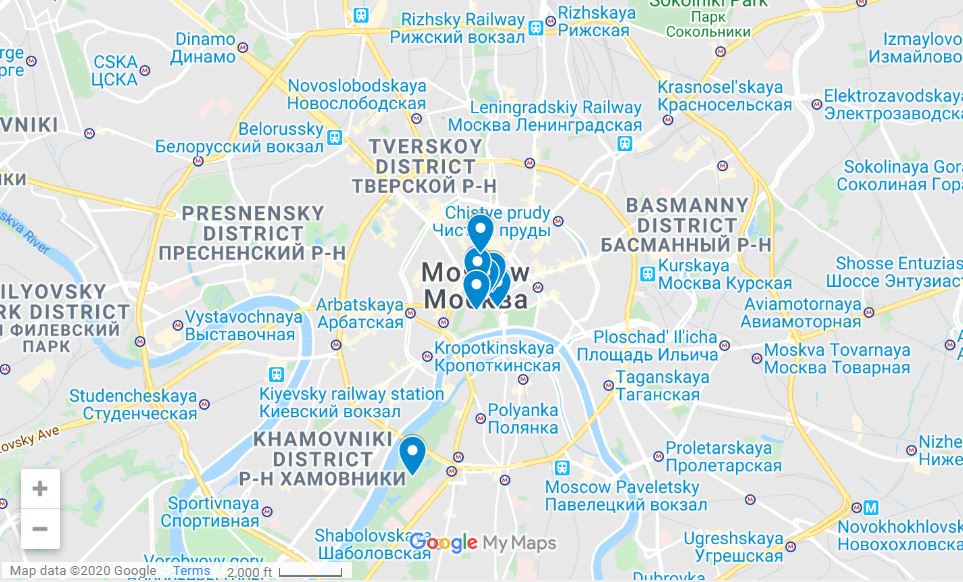
Click here for the interactive map .
What to do in Moscow in 3 days
- Day 1: The Red Square, GUM Department Store, St. Basil's Cathedral, Lenin's Mausoleum, and the State Historical Museum.
- Day 2: The Kremlin, the Cathedral of Christ the Saviour, Gorky Park, and the Bolshoi Theatre.
- Day 3: Izmailovsky Market, Bunker 42, and Zaryadye Park.
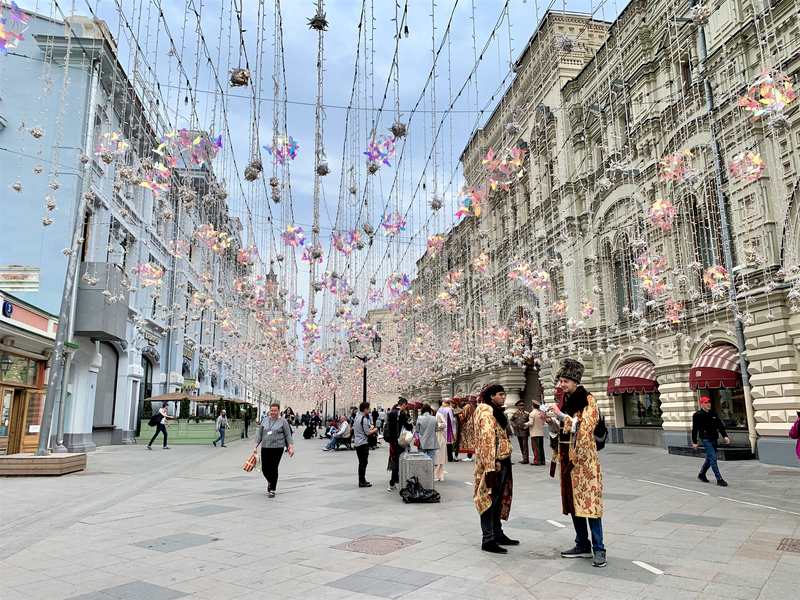
Important things to know when planning a trip to Moscow
The best time to plan a trip to Moscow is April-May and September-October . During these months temperatures are (generally) quite comfortable, though even in April there can be a bit of snow! The summer months are hot, both in regard to temperature as well as activities in the city. While it's a nice time to visit, it's also the busiest time of the year to visit Moscow. Hotel prices reflect this as well and summer definitely isn't a great time for budget travelers to visit Moscow. Winter in Moscow is cold, and I mean seriously cold (-15°C isn't rare). However, if you can withstand the subzero temperatures and freezing winds, it can be a magical time to visit. A snow-covered St. Basil’s Cathedral is a sight you will never forget. Keep in mind that days are short in winter and be sure to bring plenty of warm winter clothes!
The official currency in Russia is the Russian Ruble (₽ or RUB). Here you can find the current exchange rates, at the time of writing €1 is approximately 70RUB and $1 is around 62RUB.
Yes, you probably do. Getting a visa for Russia requires a bit of time and effort. You need to fill out several forms and provide a detailed travel itinerary and information about your accommodation. Also, you will need a Visa Support Letter which can be provided by your travel agency or your hotel. Depending on your nationality, there may be additional requirements, please refer to the information provided on the website of your country's Embassy in Russia.
While most of the things to see in Moscow listed in this post are within walking distance of each other, sometimes you will have to travel a bit further afield. The best way to get around in Moscow is by metro. It's cheap and efficient and a sightseeing activity in itself, because Moscow has the most beautiful metro stations in the world ! Among the most exquisitely decorated stations are Komsomolskaya, Novoslobodskaya, Mayakovskaya, Taganskaya, and Prospect Mira Station, but there are many more worthwhile stations to be found in the Moscow underground. You can purchase a single ticket from one of the ticket machines or get a rechargeable Troika Card when you plan on taking the metro several times. Read more details on how to use the Moscow metro here . If you prefer to get around by taxi, that's possible too. We used the Gett app to order a taxi (similar to Uber) to avoid confusion about our intended destination and having to negotiate in Russian. A convenient extra for families is the Gett Kids option, these cars are outfitted with a car seat.
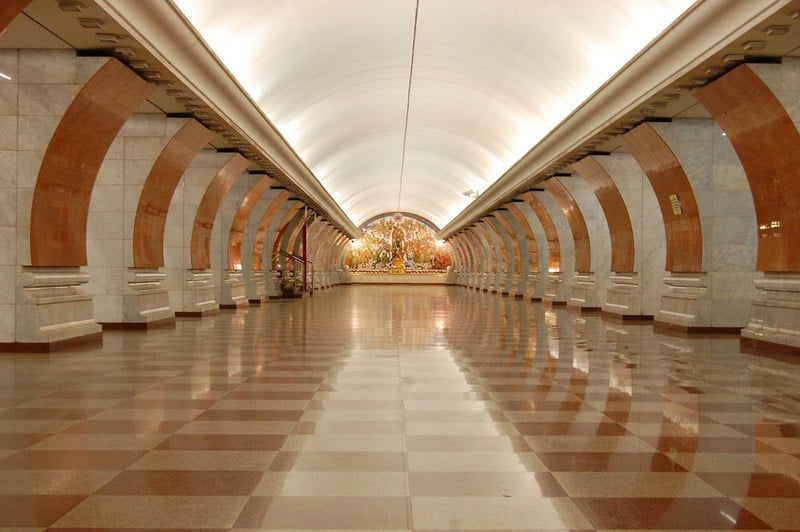
The best things to do in Moscow
While you could easily spend a week in Moscow (or more), most of us, unfortunately, don't have that much time available.
This 3-day Moscow itinerary will guide you to the most popular and important places to visit in Moscow, as well as to some of the more unusual things to do in Moscow.
Below you can find the list of the Moscow sightseeing highlights included in this post.
The Red Square
Gum department store, st. basil's cathedral, lenin's mausoleum, the state historical museum, the kremlin, cathedral of christ the saviour.
- The Bolshoi Theatre
Izmailovsky Market
Zaryadye park.
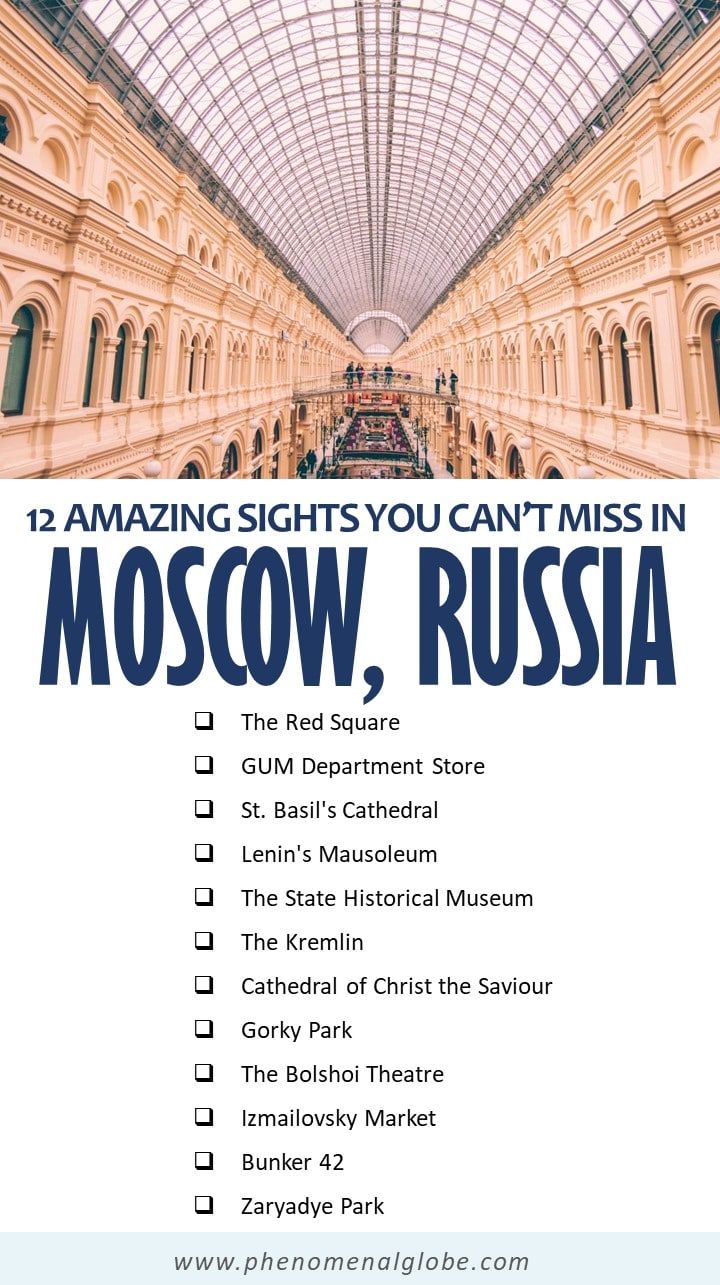
Plan your trip like a pro with these tools: ✈️ Find the best flight deals on Kiwi.com . ? Get the best car rental deal for your road trip on Rentalcars.com . ?️ Find your dream accommodation on Booking.com or Agoda . ? Book the best tours via Get Your Guide , Viator or Klook . ? Plan your journey with the Lonely Planet . ?️ Travel safely and get reliable travel insurance from Safety Wing .
Moscow itinerary day 1
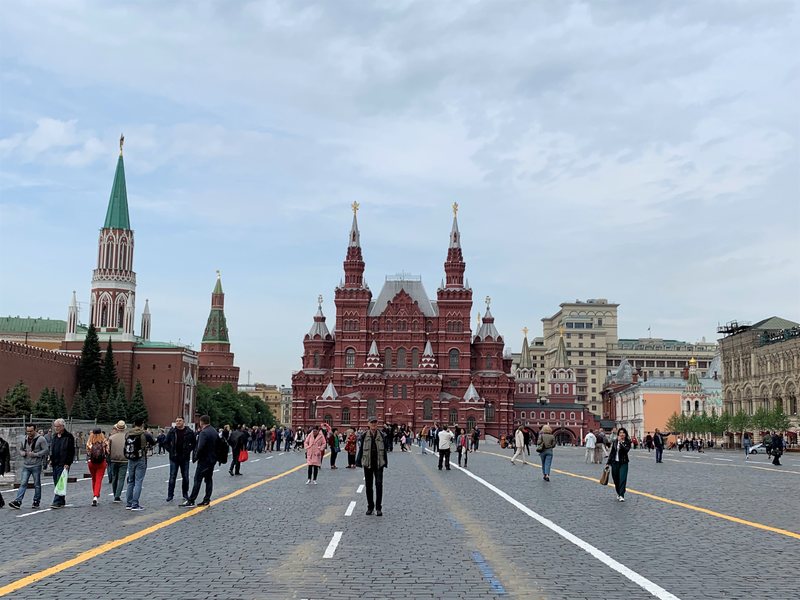
There is no better place to start your first day in Moscow, than at the world-famous Red Square.
This square is considered the central square of Moscow, not just because all the major streets start here, but also because no matter where you look when standing on this square, there are historic buildings all around.
Starting with the impressive GUM store and going clockwise, there is the colorful Saint Basil's Cathedral, the Kremlin, Lenin's Mausoleum, the State Historical Museum, and the Kazan Cathedral.
However, before entering any of these Moscow must-see attractions, allow yourself a moment to take in the view and let it sink in that you're standing on historical grounds (and a UNESCO site).
The Red Square was the official address of the Soviet government and played an important part in history. Many military parades have been held (and are still being held) here. It's the place where protests have taken place, as well as high-profile concerts from famous international artists.
All in all, it's one of the places in Moscow you can't miss during your Moscow city trip!
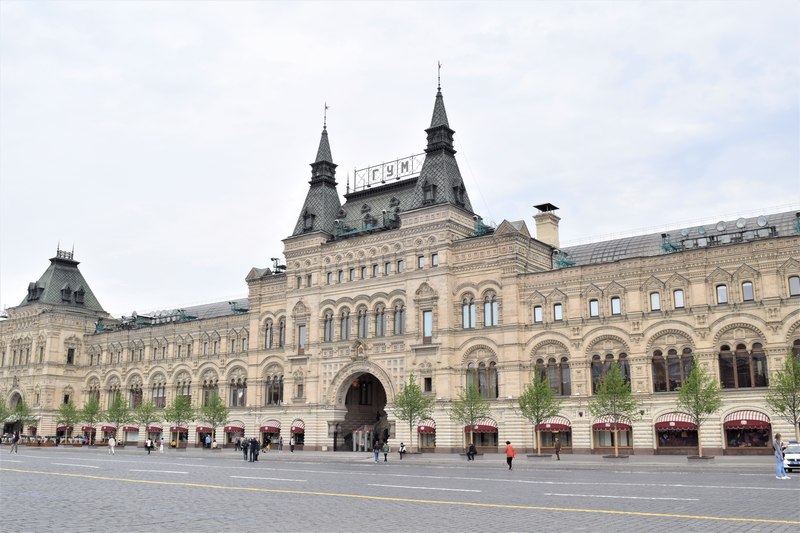
Yulia from That's What She Had: it might seem like visiting a department store is not something you’d do on the first visit to Russia’s capital.
But GUM is not like any other department store and is well worth your time, if only for its unique architecture.
First of all, it’s located right on Red Square which makes it an easy stop on your Moscow trip itinerary. Second, GUM is not a simple mall, but an institution built in the late XIX century.
The abbreviation stands for Glavniy Universalniy Magazin or Main Universal Store. Its impressive facade extends for over 240 meters along the eastern side of Red Square.
Inside you’ll find a beautiful glass ceiling supported by a metal framework, not unlike the ones found in the old train stations of Great Britain.

While shopping in GUM will cost you an arm and a leg, there’s one reason why tourists and locals come here anyways: traditional Russian food at Stolovaya #57. Stolovaya is Russian for canteen and this is where you can get your pelmeni , borsch , and pirozhki fix!
Afterward, don’t forget to get the famous plombir ice cream in one of the kiosks on the ground floor.
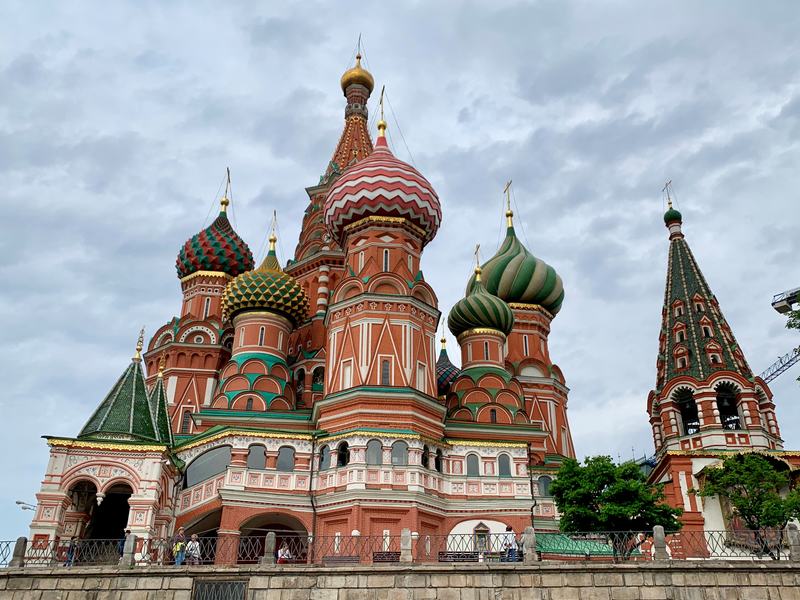
Saint Basil's Cathedral with its colorful domes is easily recognizable and one of the most popular Moscow tourist attractions. The building, built on orders from Ivan the Terrible, was completed in 1561 to commemorate the victory over Kazan and Astrakhan.
Until the construction of Ivan the Great Bell Tower (which can be found within the walls of the Kremlin), it was the tallest building in Moscow.
The design of St. Basil's Cathedral is truly unique; it's shaped like the flame of a bonfire and not one building in a similar style can be found in the whole of Russia.
A legend tells the story of how Ivan the Terrible had the architects of the Cathedral blinded so they could never build anything comparable.
This is a myth, however, but the fact remains that Saint Basil's Cathedral is one of a kind and it's not surprising it has become the symbol of Russia.

Wendy from The Nomadic Vegan: Lenin Mausoleum is hard to miss. It's a stepped-pyramid construction that sits right at the base of the Kremlin walls on the western side of Red Square.
Entrance is free but note that opening hours are quite limited, with visiting hours lasting only from 10 am to 1 pm on Tuesday, Wednesday, Thursday, and Saturday.
If seeing Lenin's embalmed body is important to you, be sure to take this into account when planning your itinerary in Moscow.
One of my top tips for travelers to Russia is to arrive early, well before the mausoleum opens, as the queue is usually quite long. However, usually, the queue does move pretty quickly.
This is especially true now that they have lifted the ban on bags and cameras.
It used to be that all cameras, smartphones, and bags of any size had to be checked at a left-luggage office nearby. But now you can bring a small handbag or backpack as well as your camera and phone.
Photography inside the mausoleum is still strictly forbidden, but you are allowed to take photos of the graves of various other important Russian figures that line the path leading to the mausoleum.
Once you finally enter the mausoleum, the atmosphere is surprisingly peaceful and uncrowded. It doesn't feel nearly as rushed as when visiting Mao Ze Dong's tomb in Beijing or Ho Chi Minh's body in Hanoi , for example.
The illumination of the body is very well done and would make for superb photography if it wasn't forbidden. As an added bonus, just after you exit, you'll see the grave of Joseph Stalin outside.

Rai from A Rai Of Light: the imposing crimson building at the northern end of the Red Square is the State Historical Museum.
By decree of Alexander III, the museum was built with the support of Russian historians, philosophers, and artists. The red brick building, dating from 1875, was designed in the Russian revival style by Vladimir Shervud.
The National Museum of Russia houses a collection of over four million items, devoted to the history of the country's ancient and imperial period.
The exhibitions include many items previously owned by members of the Romanov dynasty, such as documents, artwork, personal items, furnishings, and decorations from the palace interiors.
Another exhibit features relics of the prehistoric tribes that once inhabited this region.
Notable items include ancient manuscripts, birch-bark scrolls, a longboat excavated from the banks of the Volga River, and the largest coin collection in Russia, sourced from the museums in St Petersburg .
The State Historical Museum is open daily from 10 am to 6 pm. The entrance fee is 700₽ per adult.
Moscow itinerary day 2

When listing the best Moscow things to do, one cannot miss the Kremlin! The Kremlin houses the current seat of power in Russia and has done so for several decades.
Within its walls, the offices of the Russian Government can be found. During Soviet rule, the Kremlin was where all the important decisions were made but its history goes back for many centuries.
The first mention of the Kremlin in history books was in 1147, however, the current citadel dates from the 16th century.
The Kremlin is one of the major fortifications found in Europe, with walls that are up to 6.5 meters thick and 19 meters high in particular sections.
Inside the complex, there are many government buildings, however, these aren't accessible to the public.
Around Cathedral Square you'll find (as the name suggests) many churches and cathedrals, such as the Cathedral of the Archangel, Annunciation Cathedral, the Church of Laying Our Lady's Holy Robe, and Ivan the Great Bell-Tower.
While Cathedral Square is definitely worth visiting, the highlight of the Kremlin is a visit to the Armoury.
Inside you can find an impressive collection of Faberge eggs, beautiful dresses worn by Catherine the Great, intricately decorated thrones used by the Tsars, and much more. Unfortunately, photography is forbidden inside the Armoury.
Practical information about visiting the Kremlin
In order to visit both Cathedral Square and the Armoury, you will have to buy two separate tickets. A ticket to Cathedral Square costs 700₽ and a ticket to the Armoury is 1000₽. Prices mentioned are for adults, children below 16 years old are free.
Tickets can be bought at the ticket office onsite on the same day, however, there's no guarantee tickets will be available, especially during peak season.
Conveniently, tickets can be bought online as well, which is highly advisable if you want to make sure you'll be able to visit the Kremlin during your city trip to Moscow.
How much time to spend at the Kremlin
Be sure to allow plenty of time to explore the Kremlin, at least half a day but it's easy to spend more time as there is so much to see.
Please note there isn't any food sold inside the Kremlin, so bring a snack and enough water (especially in summer when it can get pretty hot).
Luggage storage
Backpacks aren't allowed inside the Kremlin, they can be stored (for free) in the cloakroom, but you can bring your camera and a small purse.
We could also take our Babyzen Yoyo stroller inside, which was very convenient as our 10-month-old son could take a nap while we explored the sights.

After the original Cathedral of Christ the Saviour was demolished by Stalin in 1931, a new version was completed in 2000.
The imposing building is the tallest Orthodox Christian church in the world (103 meters high), and is beautiful on the outside as well as on the inside.
Visiting the Cathedral is free of charge and it's open any day of the week from 10 am to 5 pm (except on Mondays when the opening hours are 1 to 5 pm).
When visiting the Cathedral of Christ the Saviour it's important to dress appropriately. For men, this means no shorts or tank tops.
Women can't enter with mini skirts or shorts, strap tops, or anything too revealing. Also, women are advised to cover their heads with a scarf as a sign of respect.
Inside the Cathedral photography isn't allowed, but believe me when I say there is plenty to see. There are beautiful frescoes, colorful icons, impressive statues, and other vivid decorations.
For a beautiful view over Moscow, walk up the stairs to the 40-meter high observation deck (entrance fee 400₽).
Visit Gorky Park
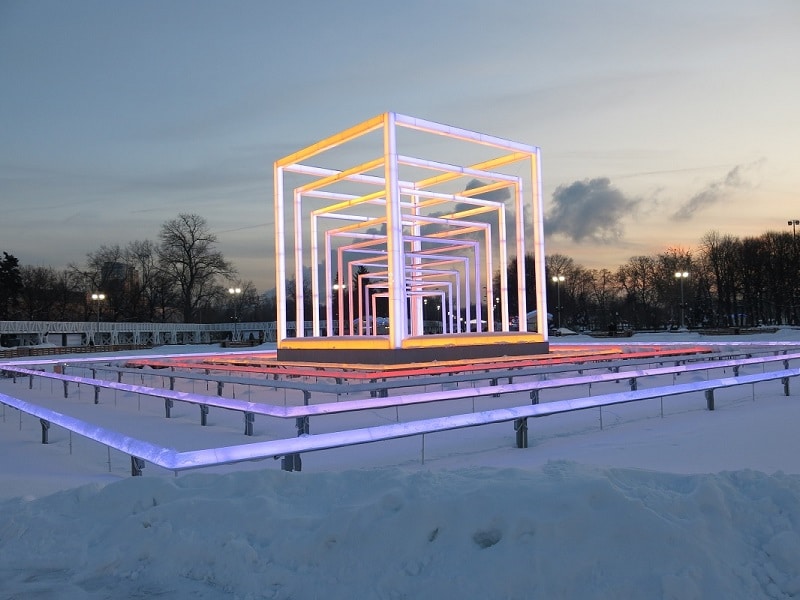
Helen from Holidays from Hels : Gorky Park, named after the Soviet writer Maxim Gorky, has recently undergone extensive regeneration to become Moscow's central leisure hub for young Muscovites.
Every day of the week you can find many Moscow residents strolling along the banks of the river in the summer, hiring bikes, picnicking on the grass, or dining at one of the many restaurants.
Open-air cinemas, petanque, and ping pong are all on offer. Not to be missed is the iconic white stone entranceway and museum, complete with columns carved with Soviet hammers and sickles.
In winter, look out for the ducks waddling across the frozen Moskva River, and watch boats attempting to navigate through the cracked ice. However, the real winter highlight is to try ice skating on one of the biggest rinks in Europe!
Ice skating in Gorky Park
The park’s maze of pedestrian pathways is transformed into one huge skating rink, which can play host to up to four thousand skaters.
Not surprisingly, Russians are talented ice skaters and there is a good chance you will find yourself next to a pirouetting ballerina.
Handily, you will find you will already be wearing most of what you need – gloves, hat, scarf, and thick socks and you can hire skates on-site. Lockers are included in the price if you don’t fancy skating with your day pack.
Disco tunes fill the air, and the whole arena is backlit in spectacular neon lights. Rest your weary legs and warm up at one of the cafes dotted along the frozen pathways, with the added bonus of not having to take off your skates.
Opening times
The rink is open from 10 am until 11 pm on weekdays and until midnight at weekends but closes between 3 and 5 pm. Like most attractions in Moscow, the rink is closed on Mondays.
The prices range from 350-650₽ and go up in the evening, which is the best time for the light show. Arriving at 5 pm, just as the rink opens for the evening session will give you time to find your ice legs before it fills up with more confident skaters.
Whilst waiting for the rink to open, try out the nearby tubing track where you can shoot down a snowy hill on an inflatable ring repeatedly for a very enjoyable half an hour!
How to get to Gorky Park by metro
The nearest metro is Park Kultury Station, on the other side of the river. As always, check out in advance what this looks like in the Russian Alphabet so you know when to get off!
Bolshoi Theatre
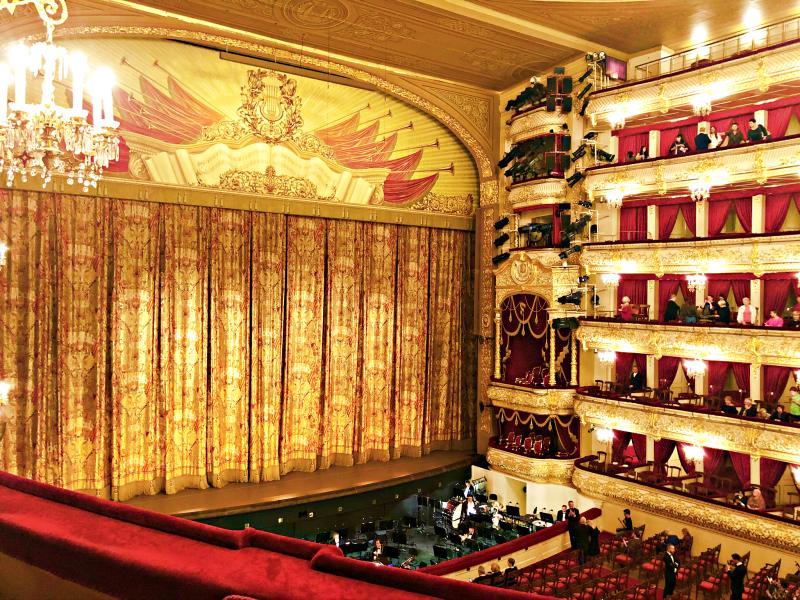
James Ian at Travel Collecting : one of the best places to go in Moscow is the famous Bolshoi Theater, located only a short walk from Red square. Bolshoy means big in Russian, and the theatre is not only big but also beautiful.
There are two ways to see the theater: on a guided tour or by watching a performance .
Take a guided tour
- English tours are held on Tuesdays, Wednesdays, and Fridays at 11:30 am. Tickets for these tours can be bought (on the same day) at the ticket office located in the Historic building of the theatre (door #12).
- A ticket costs 2000₽ per person, tours last one hour, and the number of people on a tour is limited to a maximum of 20. The tour takes you inside the theater and to the historic main stage.
Watch a performance
My favorite way to see the theater, though, is to enjoy a performance and experience the theater as a patron.
The entrance is a little underwhelming when you first arrive, the street lobby is small and quite plain and you will be immediately directed up to your floor.
There are helpful attendants on each floor to guide you to the correct door. Arrive a little early and head up to the Grand Salon on the top floor where you can enjoy a glass of champagne while people-watching (Russians dress up for the theater).
Then head to your seat and take in the stunning theater before enjoying the famous Bolshoi Ballet or another performance.
Be sure to book a show at the historic stage, there is a modern stage as well but that isn't nearly as much fun.
Moscow itinerary day 3

Karen from WanderlustingK : one of the most interesting Moscow places to visit is the Izmailovsky Market .
This flea market and tourist attraction a bit outside of the tourist center is a recreation of a Tzar’s Palace, known as a Kremlin, produced in a colorful 16th-century style.
The market is filled with tiny stalls that sell everything from snacks to kitsch to authentic items from Soviet times such as hats, pins, and other pieces of memorabilia.
You'll also find authentic antiques such as vases, paintings, and other religious items if you're looking to splurge within the interior parts of the market.
Negotiating in English is not always possible as many vendors only speak Russian, so be sure to practice your Russian numbers and see how well you can do with haggling.
It's important to carry cash when you visit given that many vendors do not accept cards. We ended up purchasing a series of hats at the market, along with a beautiful hot tea glass with a metal holder with a typical Russian scene.
Elsewhere in the market, you’ll also find a few tourist shops that sell typical Russian products. It takes a few hours to see the market in full, so arrive early as the best items go quickly!
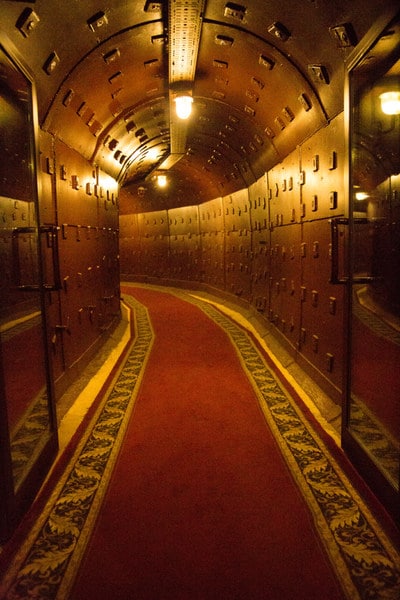
Lindsey from Have Clothes, Will Travel : Bunker-42 was once a top-secret, Soviet military complex. Stalin commissioned its construction after the United States succeeded in creating a nuclear bomb.
An impressive 65 meters (or about 213 feet) underground, was the desired depth to protect Russia’s top officials from a nuclear attack.
Bunker 42 became operational in 1954. Fortunately, it was never needed for its true purpose, and instead it was used as the command center of strategic bombers for nearly 30 years.
Nowadays it's a museum dedicated to the Cold War and visiting is a truly unique experience!
You will need to join a tour in order to see the museum. You can call ahead to book your tour (the number is: +7 499 703-44-55), there are several English tours throughout the day that are held at 13:30, 16:30, and 18:30 (the price is 2200₽).
On Mondays, there is an extra tour at 17:30, which lasts an additional 30 minutes and costs 2800₽ per person. There is also the option to book a private tour. However, I am unsure of the price for this.
You will have to wait until exactly 15 minutes before your tour begins before you'll be admitted inside. After paying for your tickets and a quick restroom stop you will descend 65 meters underground…
Another option for visiting Bunker-42, if you would rather not do the tour, is to visit the restaurant inside Bunker-42. Actually, I highly recommend visiting the restaurant before or after a tour as well!
While the food is not that great, it’s worth visiting for a drink. The restaurant is also located within the bunker and is decorated in the old Soviet style.
From time to time there will be live performances and visiting Bunker 42 is definitely an experience worth having while in Moscow! After all, how many people can say they've had a drink in a top-secret Soviet military bunker?
If you’re visiting Moscow during peak season (June-July-August), it would be worth making a reservation, to avoid having to wait. Otherwise, I would not say you need to worry about a reservation at the restaurant.
Bunker-42 is a short cab ride away from Red Square (10-15 minutes). But I recommend taking the metro to get there. The closest station is Taganskaya, which is a beautiful metro station very much worth visiting.

Park Zaryad'ye or Zaryadye Park is a lovely place for a stroll and a nice place to relax after a day of sightseeing in Moscow, especially when exploring Moscow with kids.
There are many things to see and do in this park, but I recommend starting your visit at The River Overlook , a 70-meter-long boardwalk with beautiful views over the river and the Kremlin.
Other interesting places to visit in Zaryadye Park are the Ice Cave, The Museum of Nature, and The Glass Crust. But most importantly, do as the Muscovites do and find yourself a nice place in the park to sit down and relax.
Enjoy the view, do some people-watching, and take a moment to think back about all the Moscow top sights you've seen in the past couple of days.

Where to stay in Moscow
There is a huge amount of hotels in Moscow, ranging from budget hostels to exquisite 5-star hotels. Below you can find three well-reviewed Moscow hotels (rating of 8.5+ on Agoda and Booking ).
3-star hotel in Moscow: MIRROS Hotel Mokhovaya

This 3-star hotel is one of the best budget Moscow hotels and is all about location! From the hotel, it's just a 10-minute walk to the Kremlin and only 600 meters to the Christ the Savior Cathedral.
Set in a historic 19th-century mansion, the hotel features classic rooms with ensuite bathrooms.
The staff is friendly and there is a metro station nearby (Borovitskaya), making it easy to get to the Moscow attractions a bit further afield.
Click here to book
Modern hotel in Moscow: Barin Residence Myasnitskaya
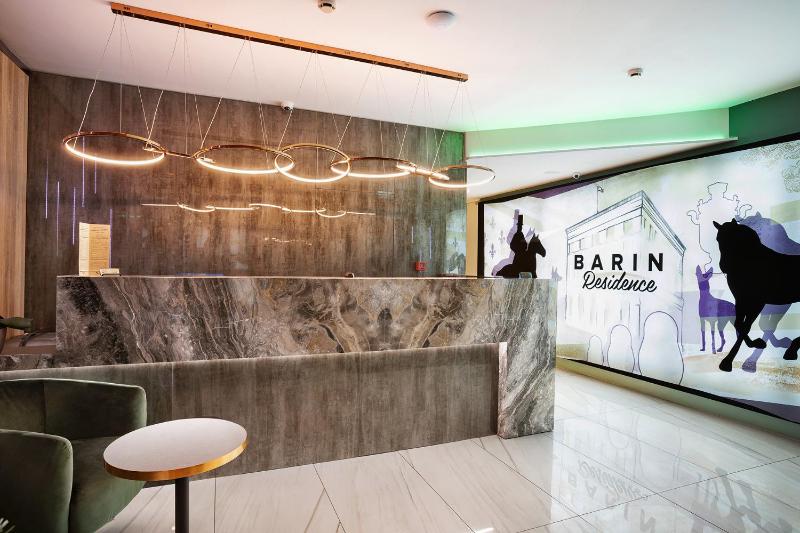
The Barin Residence Myasnitskaya is a newly built hotel, located about 1.2km from the Red Square (about a 15-20 minute walk).
The rooms and bathrooms are very modern and clean, the beds are comfortable and room service is available. This hotel is an excellent choice for travelers looking for a nice hotel without a hefty price tag.
Luxury hotel in Moscow: Hotel National Moscow

Hotel National is potentially the best Moscow hotel. It's a gorgeous 5-star hotel located just a stone's throw away from the Bolshoi Theater, the Red Square, and the Kremlin.
The building was designed by architect Alexander Ivanov and completed in 1903 and has been welcoming international travelers ever since.
With its imperial architecture, luxury design, and charming classic rooms (some with a view of the Kremlin!), the Hotel National is a unique property.
Furthermore, you can enjoy an indoor pool, sauna, and fitness center as well as the well-reviewed Beluga restaurant that serves both Russian and European dishes.
While this hotel doesn't come cheap, your stay at the Hotel National will make your trip to Moscow an unforgettable experience.
Moscow itinerary and travel guide: in conclusion
I hope this guide to Moscow will help you plan a trip to this interesting Russian city. Feel free to ask any questions you may have by leaving a comment or sending me an email !
Below you can find my other posts about the Trans Mongolian Express , and the stops we made along the way:
- St. Petersburg itinerary
- Irkutsk and Lake Baikal itinerary
- Ulaanbaatar itinerary
- Trans-Mongolian Express travel guide

This post was updated in December 2020.

Moscow Bus Network
Moscow's crazy traffic and its excellent metro network mean that the city's buses and trolleybuses aren't the number one option for tourists .
Moscow has hundreds of bus and trolleybus routes , many of which connect the city centre with its otherwise-isolated suburban neighbourhoods. Regular traffic jams mean that the bus network has not always been the most recommendable option , especially as the metro is so efficient.
Having said that, new bus lanes have opened up recently making it a comfortable alternative for certain routes. The bus can be a good, economical option at night , when 13 routes replace the metro after it shuts down (all starting from Kitay-Gorod metro and taking the main roads out to the edge off the city).
More modern buses have screens indicating the stops along the route, but in older ones you may well struggle knowing where to get off if relying on the Russian-language loudspeaker announcements .
If you do decide to catch the bus, tickets can be purchased from kiosks and metro stops, and the majority of lines operate between 6 am and 1 am.
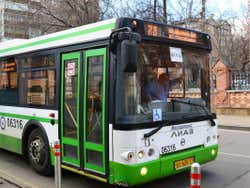
You may also be interested in

While Moscow has an efficient public transport system, you may sometimes find it more convenient to travel by taxi and prices are usually affordable. Find fares and top tips here!
Tickets & travelcards
Fares for Moscow's public transport network are the same for every mode of transport making it really easy to travel. See all the different tickets here!
What to do in Moscow
Ballet at the bolshoy, cathedral of christ the saviour, drinking & nightlife, entertainment, house-museums, the museum of modern history, the new tretyakov gallery, novodevichiy convent, patriarch’s ponds, the pushkin museum of fine arts, sandunovsky baths, the tretyakov gallery.
Travel in Moscow is easier than you might think: the city’s general layout is a series of concentric circles and radial lines emanating from Red Square and the Kremlin, and the centre is compact enough to explore on foot. Moscow’s sights can also be mapped as strata of its history: the old Muscovy that Russians are eager to show; the now retro-chic Soviet-era sites such as VDNK and Lenin’s Mausoleum; and the exclusive restaurants and shopping malls that mark out the new Russia. A CityPass is a good bet if you plan on seeing several of the city's heavyweight attractions.
Despite its size, Moscow's concentric layout is easier to grasp than you'd imagine, and the city's famous metro ensures that almost everywhere of interest is within fifteen minutes' walk of a station. Red Square and the Kremlin are the historic nucleus of the city, a magnificent stage for political drama, signifying a great sweep of history that includes Ivan the Terrible, Peter the Great, Stalin and Gorbachev. Here you'll find Lenin's Mausoleum and St Basil's Cathedral, the famous GUM department store, and the Kremlin itself, whose splendid cathedrals and Armoury Museum head the list of attractions. Immediately east of Red Square lies the Kitay-gorod, traditionally the commercial district, and originally fortified like the Kremlin. Stretches of the ramparts remain behind the Metropol and Rossiya hotels, and the medieval churches of Zaryade and the shops along Nikolskaya ulitsa may tempt you further into the quarter, where you'll find the former headquarters of the Communist Party. Take a private Kremlin tour to skip the lines for the Kremlin grounds and cathedrals.
The Kremlin and Kitay-gorod are surrounded by two quarters defined by rings of boulevards built over the original ramparts of medieval times, when Moscow's residential areas were divided into the "White Town" or Beliy Gorod, and the humbler "Earth Town" or Zemlyanoy Gorod. Situated within the leafy Boulevard Ring that encloses the Beliy Gorod are such landmarks as the Bolshoy Theatre and the Lubyanka headquarters of the secret police – with its "KGB Museum" – while the Zemlyanoy Gorod that extends to the eight-lane Garden Ring is enlivened by the trendy old and new Arbat streets, with three Stalin skyscrapers dominating the Ring itself.
Beyond this historic core Moscow is too sprawling to explore on foot. Krasnaya Presnya, Fili and the southwest describes a swathe which includes the former Russian Parliament building (known as the White House); Tolstoy's house and the Novodeviche Convent and Cemetery; Victory Park, with its war memorials and Jewish museum; and Moscow State University in the Sparrow Hills – the largest of the Stalin skyscrapers.
Across the river from the Kremlin, Zamoskvorechye and the south are the site of the old and new Tretyakov Gallery's superlative collection of Russian art. Private guided tours are recommended for art enthusiasts. Here too you'll find Gorky Park, the Donskoy and Danilov monasteries that once stood guard against the Tartars, and the romantic ex-royal estates of Tsaritsyno and Kolomenskoe – the latter known for staging folklore festivals and historical pageants.
Taganka and Zayauze, east of the centre, likewise harbour fortified monasteries – the Andronikov, Novospasskiy and Simonov – and the erstwhile noble estates of Kuskovo and Kuzminki, but the main lure for tourists is the Izmaylovo art market. Inside the Izmaylovo Kremlin, a cultural centre, there are also a range of attractions, from the Bread Museum and the Vodka History Museum to the fascinating Museum of Russian Toys.
Moscow's Northern Suburbs cover a vast area with a sprinkling of sights. Foremost is the Memorial and Museum of Cosmonautics and VDNK. For anyone interested in the glory days of the space race, and its monumental landmarks and propaganda, a visit is a must, like on this guided tour . In the vicinity are the Ostankino Palace, Moscow's Botanical Gardens and TV Tower. West from here, the Museum of Soviet Arcade Machines will appeal to visitors with an interest in Soviet social history, too.
Outside Moscow there's scope for day-excursions to the Trinity Monastery of St Sergei, the Abramtsevo artists' colony, Tchaikovsky's house in Kiln, Lenin's estate at Gorki Leninskie, and the battlefield of Borodino, where the battle is re-enacted every September. You can also head out to the village of Aksakovo for a beautiful two-hour troika ride. Further afield, the historic towns of Vladimir and Suzdal are graced by splendid cathedrals and monasteries attesting that they were the seat of a principality when Moscow was merely an encampment. Suzdal is one of the loveliest towns in Russia, and definitely merits an overnight stay. It's also possible to visit the Aviation Museum at Monino air base, en route to Vladimir, if you take the trouble to get permission ahead of time.
This article includes affiliate links; all recommendations are editorially independent.
Top image: Komsomolskaya metro station © Gubin Yury/Shutterstock
While Moscow's Bolshoy Ballet (also spelt "Bolshoi") is going through uncertain times, plagued by infighting and rivalries (not least the recent acid attack on Artistic Director Sergei Filin), few would deny themselves the chance to see this legendary company. During the season, evening performances start at 7pm, and Saturday and Sunday matinees at noon; there are no shows on Monday.
You can see what’s on currently and for a few months ahead on the Bolshoy’s website – although the English version sometimes lags behind the Russian one. The ballet company is usually abroad over summer and sometimes also in the autumn, leaving the junior corps de ballet to entertain visitors – although star dancers are certain to be in Moscow for the opening of the new season in September. For more on Russian ballet visit www.for-ballet-lovers-only.com . For those not interested in ballet but more in the historical aspect of the Bolshoy theatre, take a guided historic tour of the grounds.
If you're more interest in Folk Dances, visit the Kostroma Folk Dance show , the most authentic one in Moscow.
Built as a symbol of gratitude to divinity for having aided the Russians’ defeat of Napoleon in 1812, the Cathedral of Christ the Saviour (daily 10am–6pm), opposite the Pushkin Museum of Fine Arts at Volkhonka ul. 15, was demolished in 1931 in favour of a monument to socialism. The project was soon abandoned and years later, under Krushev’s rule, the site was turned into the world’s largest public swimming pool. In 1994 the Cathedral was rebuilt and is now a symbol of Moscow’s (and Russia’s) post-Communist religious revival.
Moscow isn’t a city that goes to bed early. Many venues act as a café by day, restaurant in the early evening, and both bar and club at night. This can cover anything from an arthouse café with a spot of live music to a dance warehouse, or a fancy nightclub with a restaurant and casino. Most cater to a certain crowd, whether it’s creative professionals, students, shell-suited "flatheads" or designer-draped models. While formal dress codes are rare, face control (feys kontrol) is widespread. Russians distinguish between “democratic” face control (aimed at keeping out hooligans and bandits), and the kind that favours the rich (never mind how they behave). It’s unwise to rile club security staff, however rude they might be.
There are scores of trendy bars and clubs on Krasny Oktyabr, a former chocolate factory building located across the river from Kropotkinskaya and now home to some of Moscow’s hippest nightlife.
Learn how to walk, talk, drink and party like a Russian on a small group with Russian spirits.
Moscow's gastronomic scene has improved enormously over the last five years, with hundreds of new cafés and restaurants offering all kinds of cuisine and surroundings, aimed at anyone with a disposable income – from mega-rich New Russians and expense-account expatriates to fashion-conscious wealthy teenagers.
For cheap eats head to a canteen, where you can compile a tray of dishes smorgasbord-style. Take advantage of the great-value business lunches offered by cafés and restaurants during the week between noon and 4pm.
For well over a century, Moscow has been one of the world’s great centres of classical music, opera and ballet, most famously represented by the Bolshoy Theatre but also by its orchestras and choirs. Theatre can be tricky for non-Russian speakers though circus and puppetry surpass the language barrier. Moscow’s film industry and annual international film festival dwarf St Petersburg’s, but at other times most cinemas screen Hollywood blockbusters.
All this can be surprisingly good value, provided you ask for the cheapest ticket available ( samiy deshoviy bilyet ).
Gorky Park on ul. Krymskiy Val 9 (R100; Park Kultury) is a large park occupying an area of over 700 acres along the river. In the winter the frozen-over paths become one of the city’s largest ice rinks, while in the summer Muscovites stroll the area savouring an ice cream.
Admirers of Bulgakov, Chekhov, Gorky and Tolstoy will find their former homes preserved as museums. Anton Chekhov lived at Sadovaya-Kudrinskaya ul. 6, in what is now the Chekhov House-Museum (Tues, Thurs & Sat 11am–6pm, Wed & Fri 2–8pm; R100, student R60; Barrikadnaya), containing humble personal effects, while the Gorky House-Museum (Wed–Sun 11am–6pm, closed last Thurs of the month; free; Arbatskaya) on the corner of Povarskaya ulitsa and ulitsa Spiridonovka is worth seeing purely for its raspberry-pink Art Nouveau decor. Leo Tolstoy admirers should head to the wonderfully preserved Tolstoy Memorial Estate on ul. Lva Tolstogo 21 (Tues, Wed & Fri 10am–6pm, Thurs 1–9pm, Sat & Sun 11am–6pm; R200, student R60; Park Kultury) where the Tolstoy family lived after moving to Moscow from their country estate in 1881, and where the novelist wrote War and Peace . The Bulgakov Museum at Bolshaya Sadovaya ul. 10 (Sun–Thurs 1–11pm, Fri & Sat until 1am; free; t 495/970-0619; Mayakovskaya), is the house where the novelist lived from 1921 to 1924. There are nightly tours (1–6am; R550; phone a week in advance for tour in English).
The Museum of Modern History at Tverskaya ul. 21 (Tues, Wed, Fri 10am–6pm, Thurs & Sat 11am–7pm, Sun 10am–5pm, closed last Fri of the month; R100; Tverskaya) brings the Communist past alive with striking displays of Soviet propaganda posters, photographs and state gifts, although there’s a frustrating lack of English translation.
Opposite the entrance to Gorky Park at Krymskiy Val 10, the New Tretyakov Gallery (Tues–Sun 10am–7.30pm; R360, student R220; Park Kultury) takes a breakneck gallop through twentieth-century Russian art, from the avant-garde of the 1910–1920s to contemporary artists. Full and illuminating commentary in English is a bonus.
A cluster of shining domes above a fortified rampart belongs to the lovely Novodevichiy Convent (daily 10am–5pm; closed Tues & last Mon of month; R150; Sportivnaya), founded by Ivan the Terrible in 1524. At its heart stands the white Cathedral of the Virgin of Smolensk. In its cemetery lie numerous famous writers, musicians and artists, including Gogol, Chekhov, Stanislavsky, Bulgakov and Shostakovich.
One of Moscow’s most exclusive neighbourhoods, Patriarch’s Ponds is a pleasant spot (there’s actually just one pond) for a summer stroll or an ice-skate on its frozen waters in the depths of winter. The area is also known for being the location of the opening scene of Mikhail Bulgakov’s magical realist novel The Master and Margarita .
Founded in 1898 in honour of the famous Russian poet, the Pushkin Museum of Fine Arts at Volkhonka ul. 12 (Tues–Sun 10am–7pm; R150–300, separate fee for Impressionist wing; Kropotkinskaya) holds a hefty collection of European paintings , from Italian High Renaissance works to Rembrandt, and an outstanding display of Impressionist works.
Get the city grit out of your skin at the exquisitely elaborate Sandunovsky baths (Neglinnaya ul. 14 bldg 3–7 w www.sanduny.ru ; Teatralnaya), patronized by Muscovites since 1896. Join Russian businessmen and socialites in the banya , a wooden hut heated with a furnace, where you are invited to sweat out impurities, get beaten energetically with birch twigs, and finally plunge into ice-cold water. Men’s and women’s baths are separate, with the women’s section more like a modern spa. A three-hour session costs R1000. Daily 8am–10pm.
Founded in 1892 by the financier Pavel Tretyakov, the Tretyakov Gallery at Lavrushinskiy per. 10 (Tues–Sun 10am–7.30pm; R360, student R220; Tretyakovskaya) displays an outstanding collection of pre-Revolutionary Russian art. Russian icons are magnificently displayed, and the exhibition continues through to the late nineteenth century, with the politically charged canvases of the iconic realist Ilya Repin and the Impressionist portraits of Valentin Serov, including The Girl with Peaches , one of the gallery’s masterpieces.
To see Soviet triumphalism at its most prolific, visit the Exhibition of Economic Achievements, or VDNKh (Prospekt Mira; VDNK/Prospekt Mira), with its statue upon statue of ordinary workers in heroic poses. Adding to the scene is the permanent trade-fair-cum-shopping-centre housed in the grandiose Stalinist architecture of the All-Union Agricultural Exhibition of 1939, and the People’s Friendship Fountain, flanked by Soviet maidens, each symbolizing a Soviet republic. One of the most hubristic Soviet monuments ever built is the Space Obelisk , which bears witness to Soviet designs on the stratosphere. Unveiled in 1964 – three years after Gagarin orbited the earth – it’s a sculpture of a rocket blasting nearly 100m into the sky on a plume of energy clad in shining titanium. Moscow’s giant Ferris wheel, small amusement park and numerous food vendors help to create a fairground-like atmosphere. For a fantastic view over the VDNK, take the lift to the 25th floor of Hotel Cosmos across Prospekt Mira.
Discover more places in Russia
- The Kremlin
The Rough Guides to Russia and related travel guides
In-depth, easy-to-use travel guides filled with expert advice.

Find even more inspiration here

Planning your own trip? Prepare for your trip
Use Rough Guides' trusted partners for great rates
written by Rough Guides Editors
updated 26.04.2021
Ready to travel and discover Russia?
Get support from our local experts for stress-free planning & worry-free travels.
- Where to stay
- Travel advice

IMAGES
VIDEO
COMMENTS
Chris McCandless Journey. From Atlanta to Healy. February 15, 2023. 01 / 20. 1. May 12, 1990. Chris graduates from Emory University in Atlanta, Georgia. 2. July 6, 1990. McCandless arrives at lake Mead in Nevada. 3. July 10, 1990. McCandless sent on a hike around lake Mead Nevada. 4. August 10, 1990.
Chris McCandless journey. Chris McCandless, or Alex Supertramp Adventure, until the wild.
The Map: McCandless's Journey. Overview: This map is used for the purpose to trace Chris McCandless's destinations whether he was traveling by foot, hitch hiking, or driving his car. It starts off with his journey in Georgia to his final hours in Alaska. May 12th 1990: tells his parents he is leaving to travel around the united states in his ...
Chris McCandless' Journey. From graduation till his death. February 12, 2023. 01 / 31. 1. Atlanta, GA- May 12, 1990. Chris graduates from Emory University in Atlanta (20) 2. lake Mead- NV, July 10,1990. McCadless arrives at Lake Mead in Nevada (27) 3. Gold-mining, EE- August 10, 1990.
Christopher McCandless (born February 12, 1968, El Segundo, California, U.S.—found dead September 6, 1992, Stampede Trail, Alaska) American adventurer who died from starvation and possibly poisoning, at age 24, while camping alone on a remote trail in Alaska. His death made him a figure of controversy, admired by some as an idealist in the ...
Chris McCandless- Into the Wild Travel Map by kmuscatello20 · MapHub. Pricing. New map. Chris McCandless- Into the Wild Travel Map. by kmuscatello20. Chris McCandless- Into the Wild Travel Map by kmuscatello20.
The rusting exterior of Fairbanks City Transit System Bus 142, an abandoned 1946 International Harvester K-5 parked along Alaska's Stampede Trail. The bus began receiving international attention ...
Day 2: Wake up good and early, about 5am, and cross the Teklanika. (We'll talk more about this later.) Hike out to the bus and back, about twenty miles, in one day. Camp at the Teklanika again, this time on the side closest the bus. Day 3: Wake up early again and cross the Teklanika. Hike out to your car.
Peter Beaumont. Sat 18 Jan 2014 09.37 EST. T he old bus in which Chris McCandless died in 1992 in the interior of Alaska - made famous in Jon Krakauer's book Into the Wild and later in the Sean ...
Chris McCandless' journey took him to a number of significant and important places, but the most significant was Bus 142, Anza-Borrego, Fairbaks, Alaska, Carthage South Dakota, Bullhead City, Arizona, Denali National Park, the Slabs, De. Chris McCandless spent two months walking across the vast and rugged West.Chris, on the other hand, came up with an elegant solution to his dilemma by ...
Christopher Johnson McCandless (/ m ə ˈ k æ n d l ɪ s /; February 12, 1968 - c. August 1992), also known by his pseudonym "Alexander Supertramp", was an American adventurer who sought an increasingly nomadic lifestyle as he grew up. McCandless is the subject of Into the Wild, a nonfiction book by Jon Krakauer that was later made into a full-length feature film.
The Chris McCandless Story. Explorer J.J. Kelley revisits the ill-fated trek of American hiker Chris McCandless, who perished in the Alaskan wilderness in 1992. See Tune-In Times.
When asked about having the movie prop bus as an attraction, co-founder of 49th State Brewery, David McCarthy, doesn't seem to mind that it was bringing in new visitors—no matter what those ...
Chris McCandless' Journey. Chris McCandless' Journey. February 15, 2023. 01 / 21. 1. May 12, 1990. Chris graduates from Emory University in Atlanta. 2. July 6, 1990. McCadless arrives at Lake Mead in Nevada. 3. July 10, 1990. McCandless sent on a hike around Lake Mead. 4. August 10, 1990.
The 2007 film adaptation, "Into The Wild," is an elegiac celebration of McCandless' ( Emile Hirsch) wanderlust and a glimpse of his tragic death, told from McCandless' perspective and through his ...
Chris McCandless Journey. Harness the power of maps to tell stories that matter. ArcGIS StoryMaps has everything you need to create remarkable stories that give your maps meaning.
The bus takes an unlikely turn That's where the bus sat in the spring of 1992 when 24-year-old nomadic free-spirit Christopher McCandless stumbled upon it while heading solo into the Alaskan ...
On June 18, 2020, Carine McCandless got a call from Alaska's Department of Natural Resources. Corri Feige, the commissioner at the time, wanted to give her a heads-up: the abandoned bus where ...
Christopher Johnson Mccandless Travel- Route. Christopher McCandless: I will miss you too, but you are wrong if you think that the joy of life comes principally from the joy of human relationships. God's place is all around us, it is in everything and in anything we can experience. People just need to change the way they look at things.
In this article you will find a selection of 10 official tourist maps of Moscow, in PDF format, which you can download and print. "Moscow for Tourists", "Moscow Museums", "Moscow for Children", "Moscow Excursions" or "Arbat, the soul of Moscow", are the titles of some of these official maps published on demand of Moscow City ...
What to do in Moscow in 3 days. Day 1: The Red Square, GUM Department Store, St. Basil's Cathedral, Lenin's Mausoleum, and the State Historical Museum. Day 2: The Kremlin, the Cathedral of Christ the Saviour, Gorky Park, and the Bolshoi Theatre. Day 3: Izmailovsky Market, Bunker 42, and Zaryadye Park.
Moscow has hundreds of bus and trolleybus routes, many of which connect the city centre with its otherwise-isolated suburban neighbourhoods.Regular traffic jams mean that the bus network has not always been the most recommendable option, especially as the metro is so efficient.. Having said that, new bus lanes have opened up recently making it a comfortable alternative for certain routes.
The Bulgakov Museumat Bolshaya Sadovaya ul. 10 (Sun-Thurs 1-11pm, Fri & Sat until 1am; free; t495/970-0619; Mayakovskaya), is the house where the novelist lived from 1921 to 1924. There are nightly tours (1-6am; R550; phone a week in advance for tour in English). The Museum of Modern History.